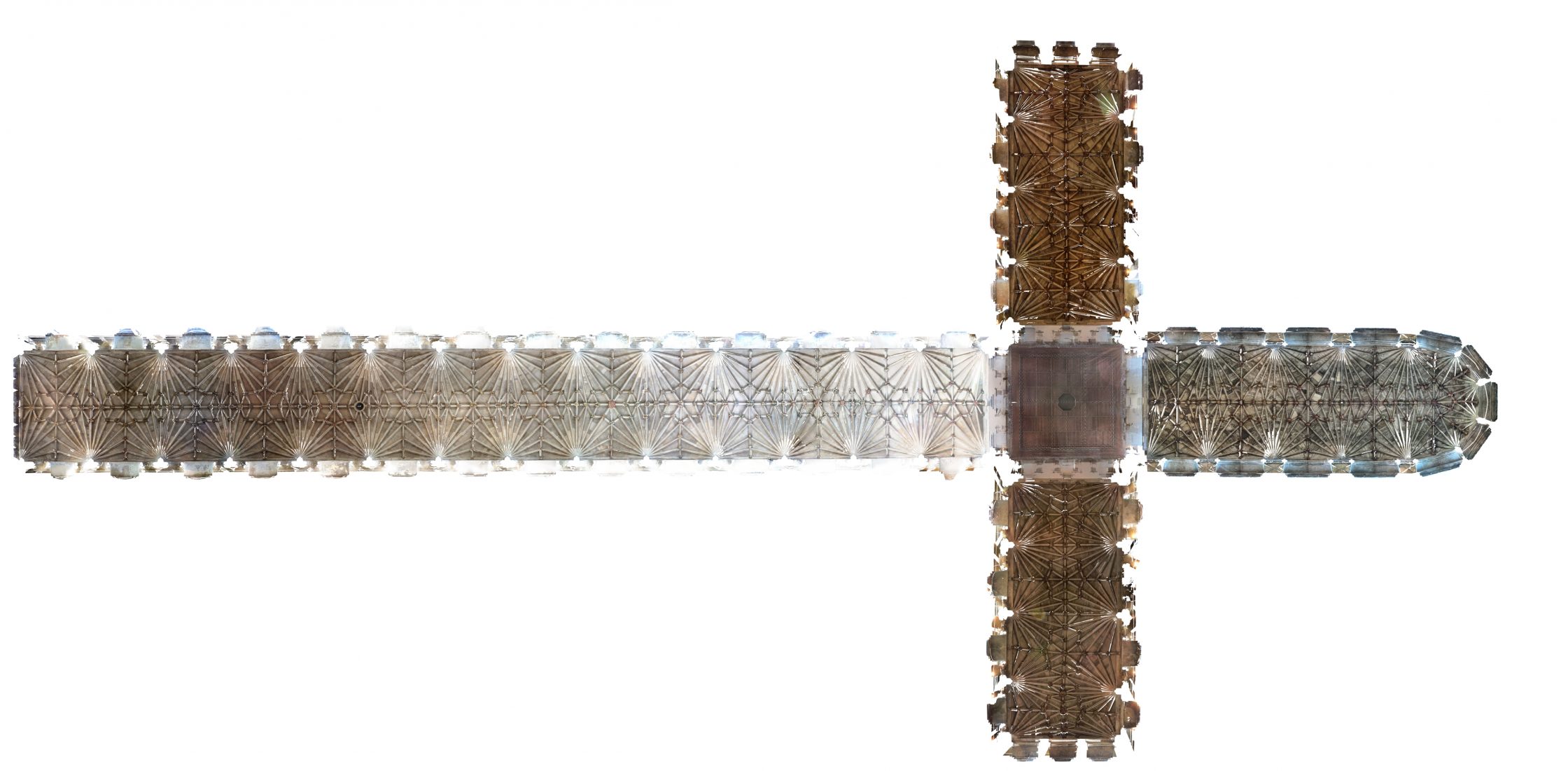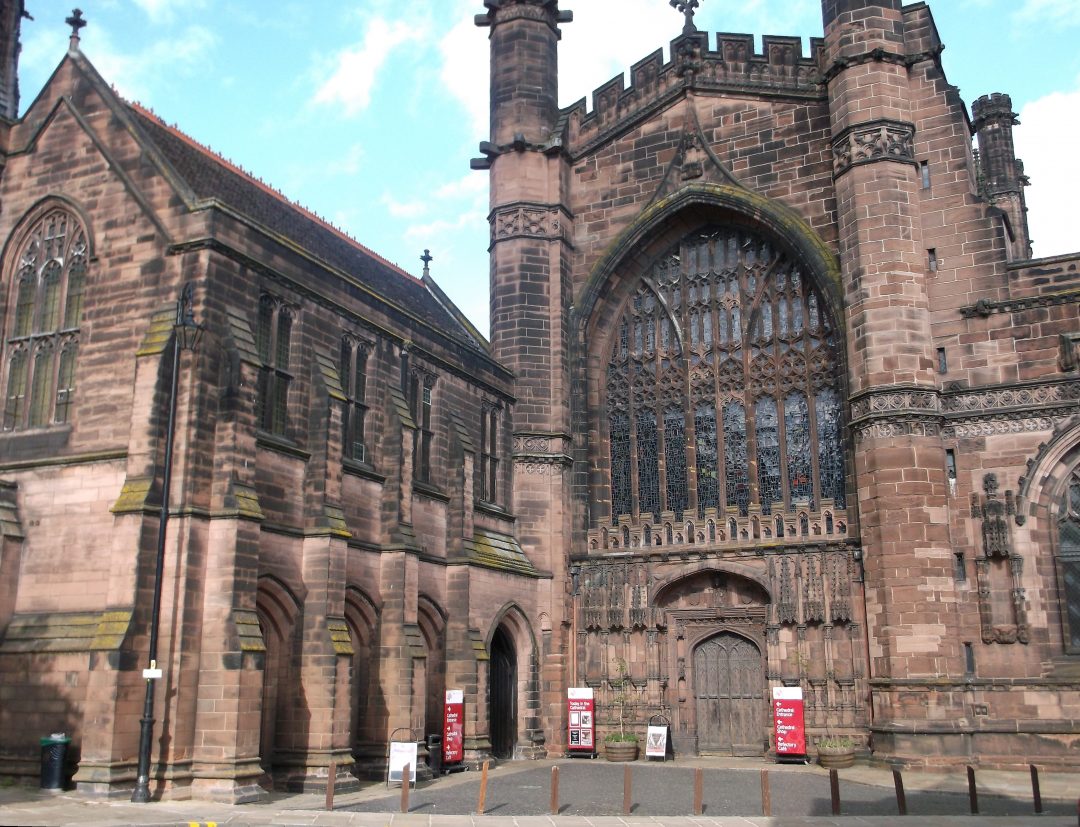About this site
The city of Norwich has one of the highest concentrations of surviving medieval buildings in the British Isles. Perhaps the most notable site is the cathedral precinct, which includes a wide range of different vaults. The main vessel of the cathedral was extensively revaulted during the fifteenth and early sixteenth centuries, and the construction of the vaulting of the nearby cloister from c. 1297-1430 has amongst the most contested chronologies in medieval architectural history. We visited Norwich in May 2019 and completed a laser scanning survey of the cathedral and cloister, funded by the AHRC Early Career Research Grant Scheme.
Plans
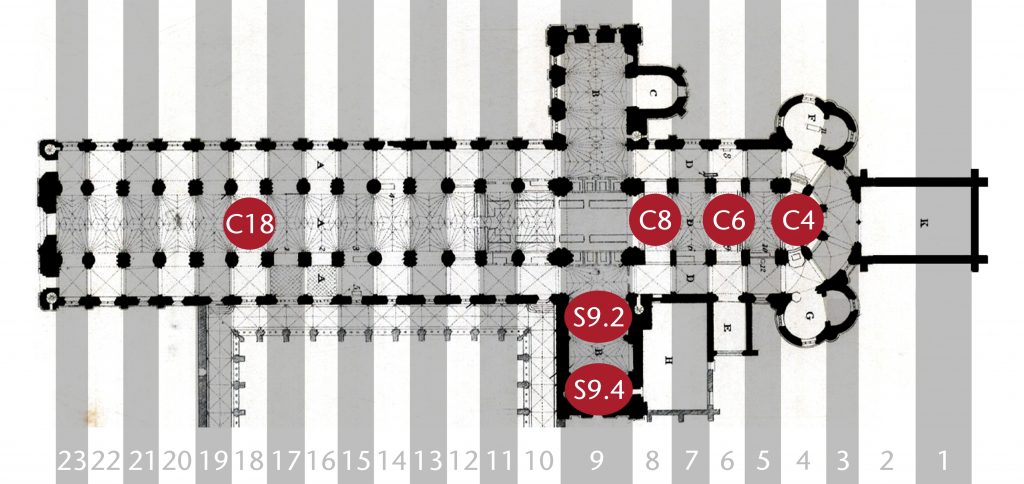
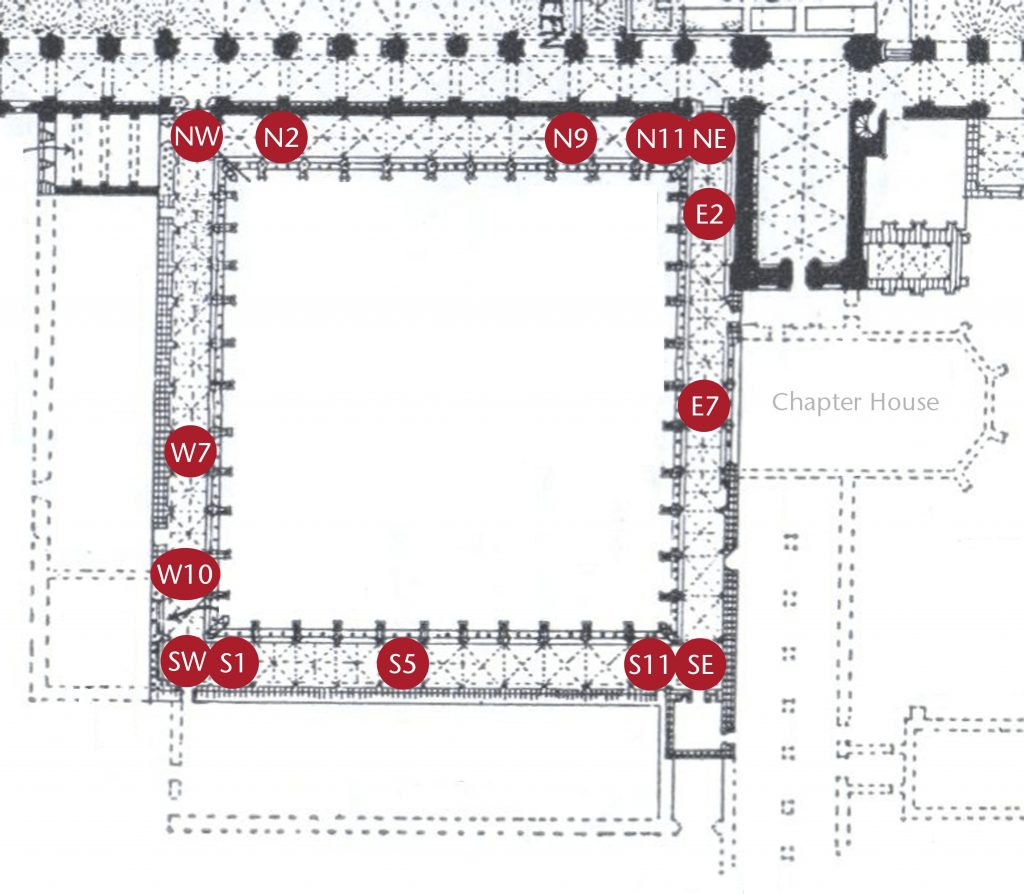
Websites
Archaeology Data Service
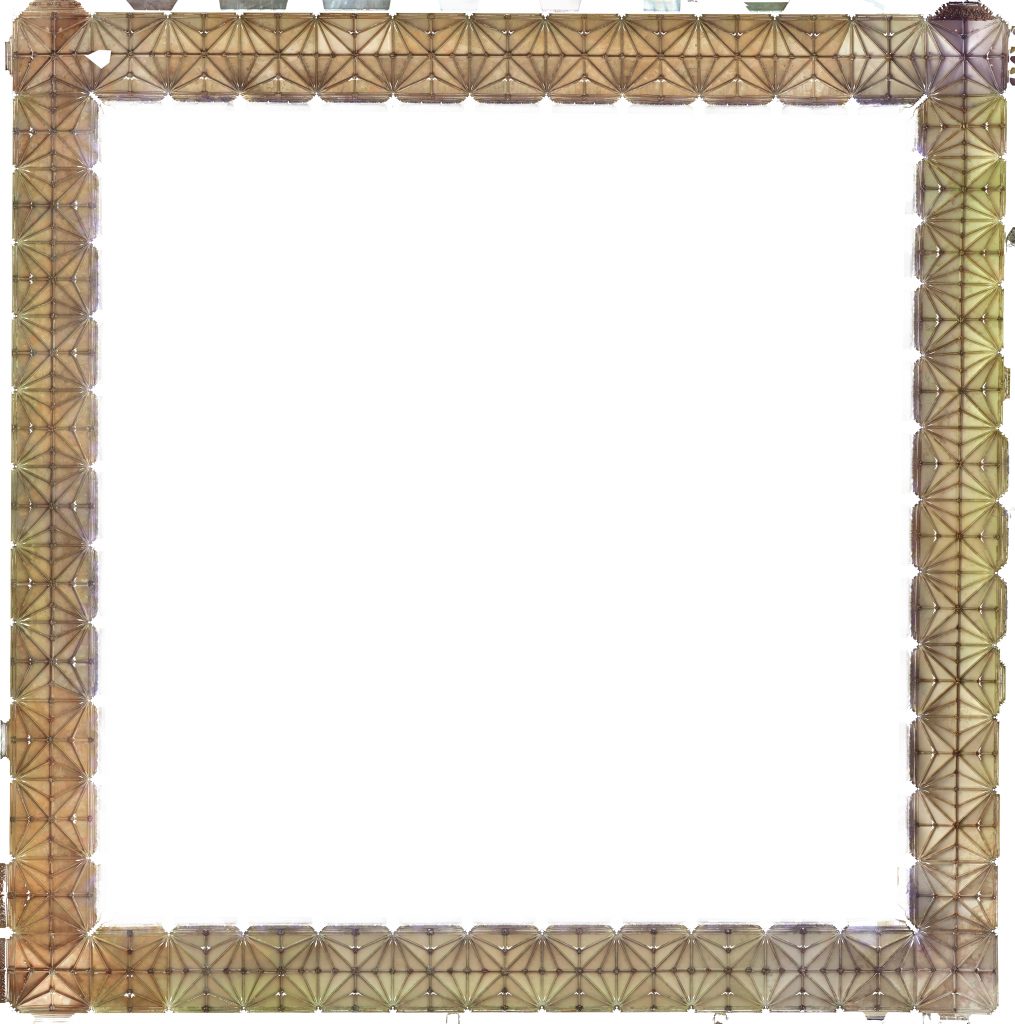
Plans, orthophotos and 3D models of Norwich Cathedral and its cloister can be downloaded here.
Sketchfab
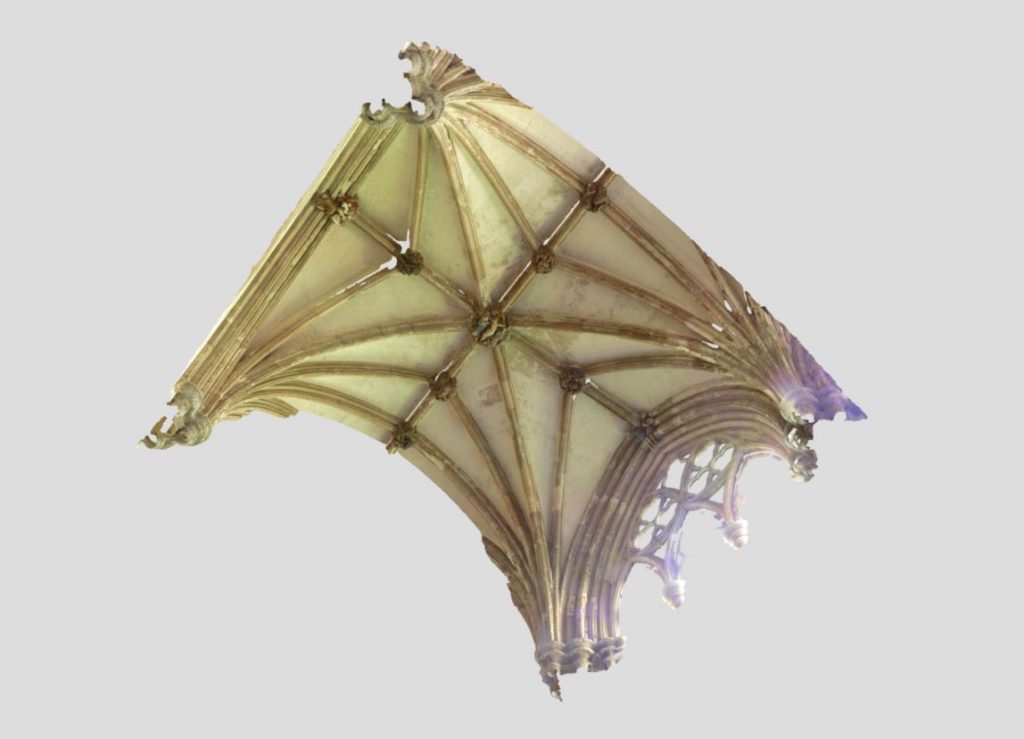
Interactive 3D mesh models of selected vault bays from Norwich Cathedral Cloister can be viewed here.
Norwich Cathedral
Choir
C4-C8 (c.1472-99)
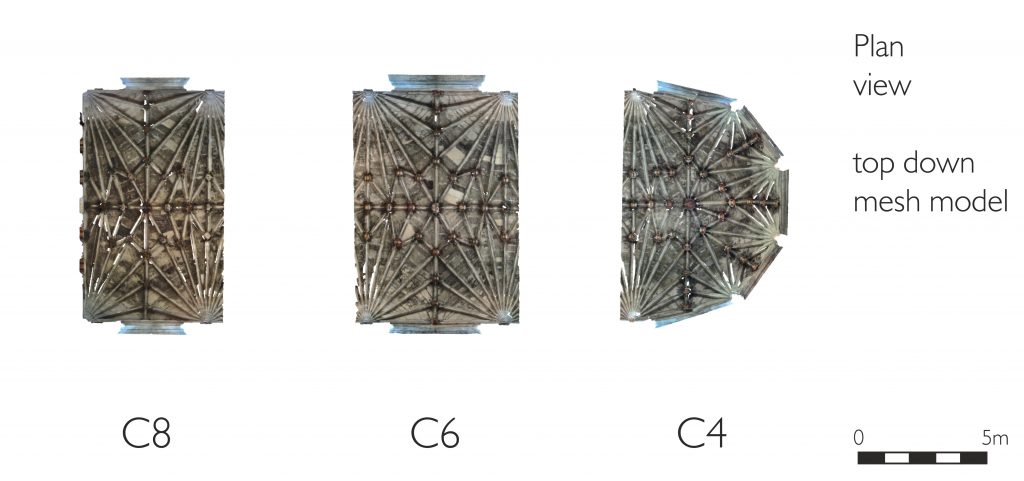
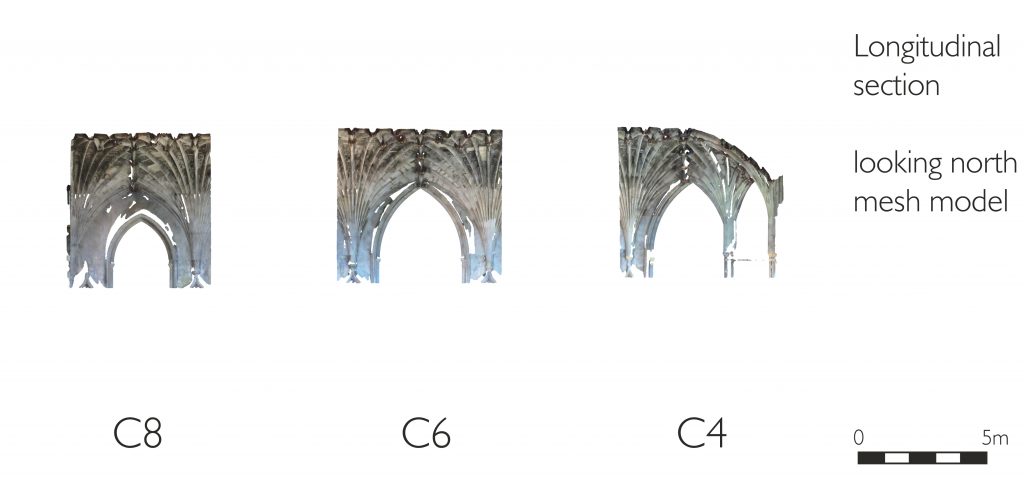
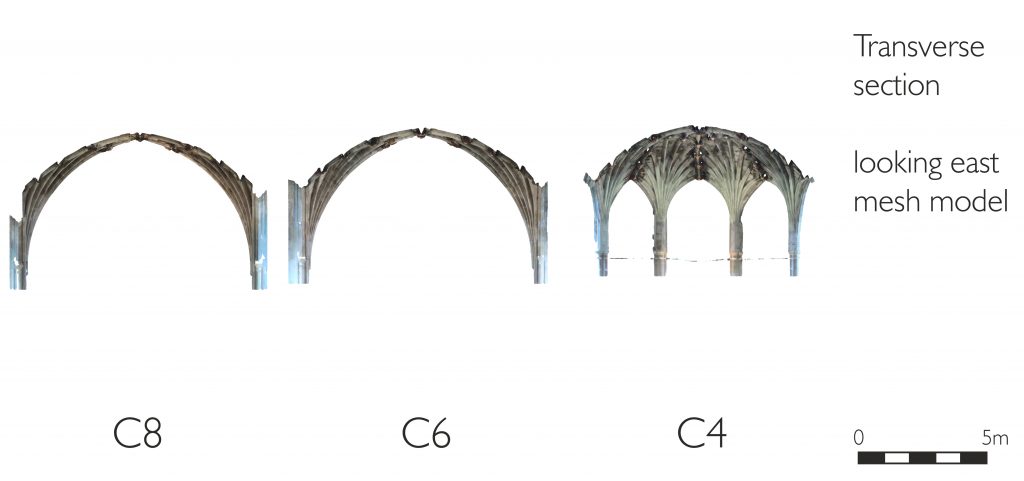
More information
The current vault of the choir at Norwich Cathedral was erected under Bishop James Goldwell (1472-99), whose heraldic badge of a golden well appears throughout the bosses. It takes the form of a complex lierne vault further divided by a sequence of stacked tiercerons, its plan similar to that of the earlier vault in the nave. A variation on the same pattern was used for the polygonal east end (C4), its shape defined by the pre-existing eleventh and fourteenth century fabric.
Transept
N9.1-N9.4; S9.1-S9.4 (c. 1509-35)
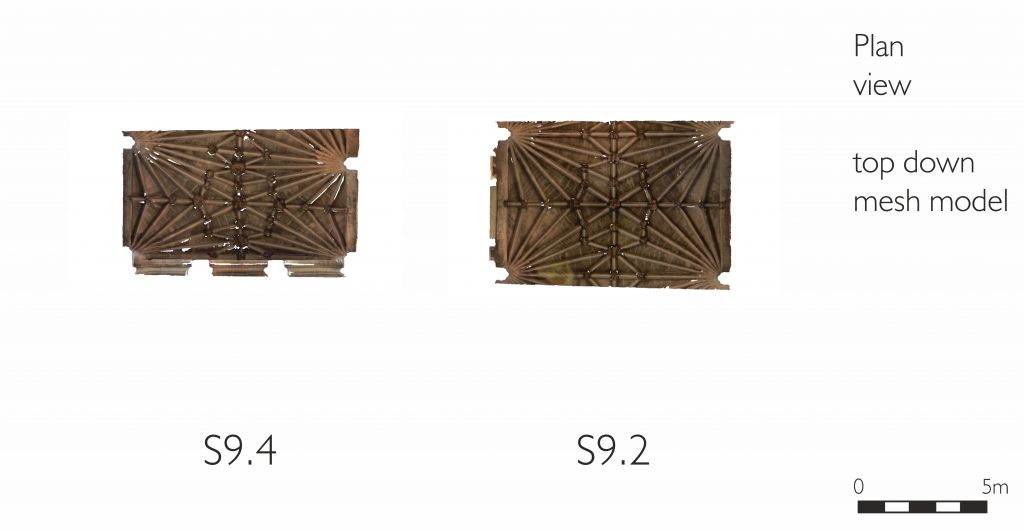
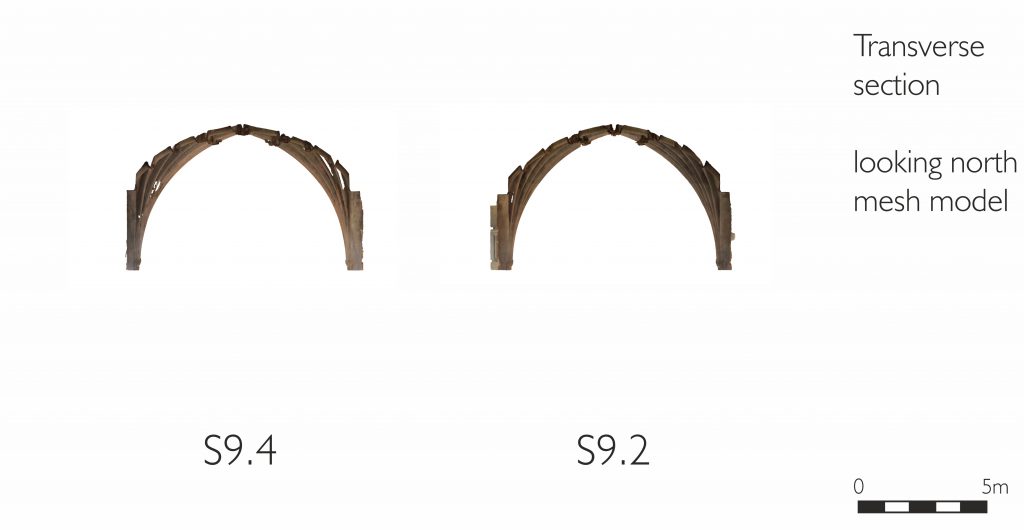
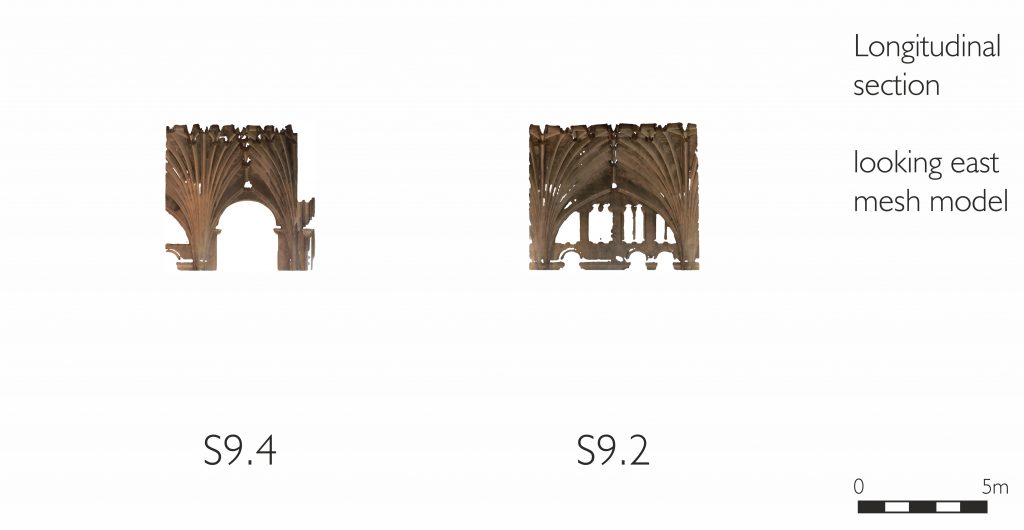
More information
The transept vaults at Norwich were added under the patronage of Bishop Richard Nix (1509-35). Their plan is close to that of the pre-existing choir vault, though it is not yet clear whether the same geometry was used for setting out its ribs.
Nave
C10-C23 (c. 1446-72)
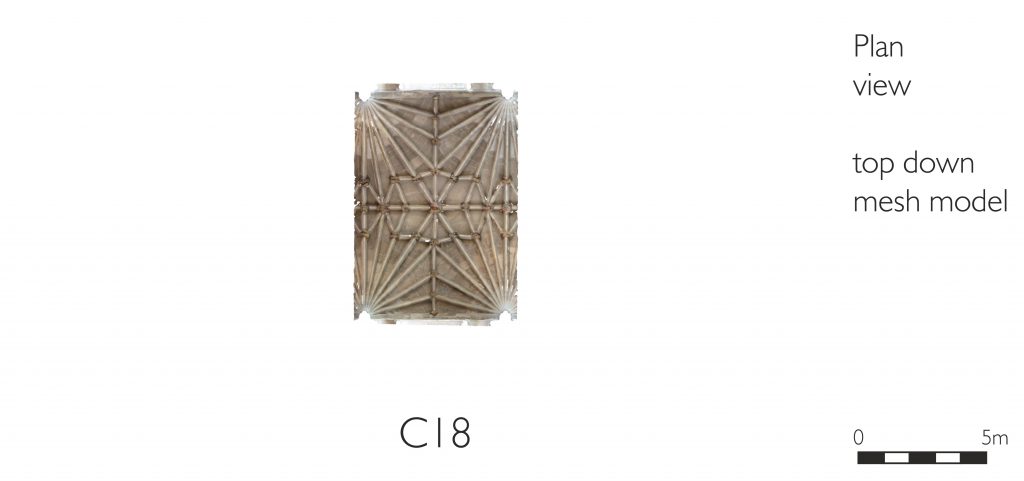
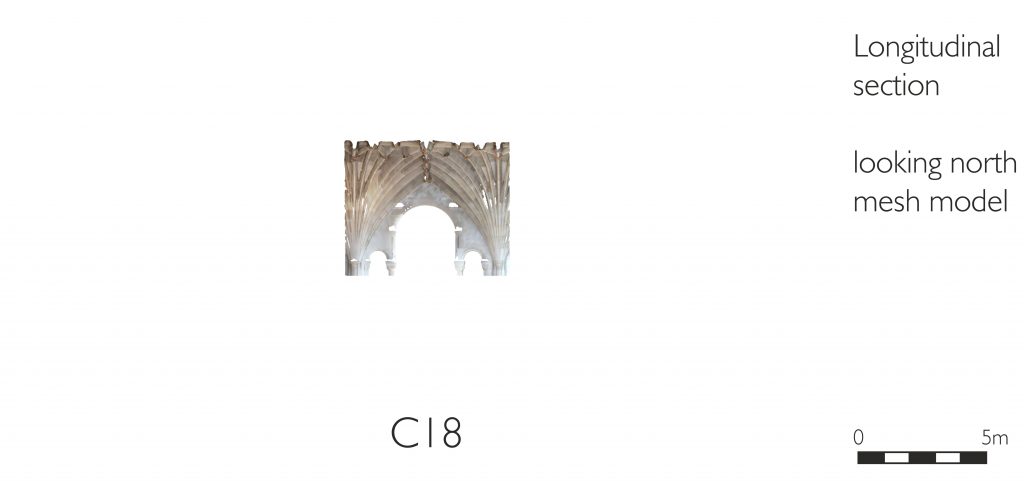
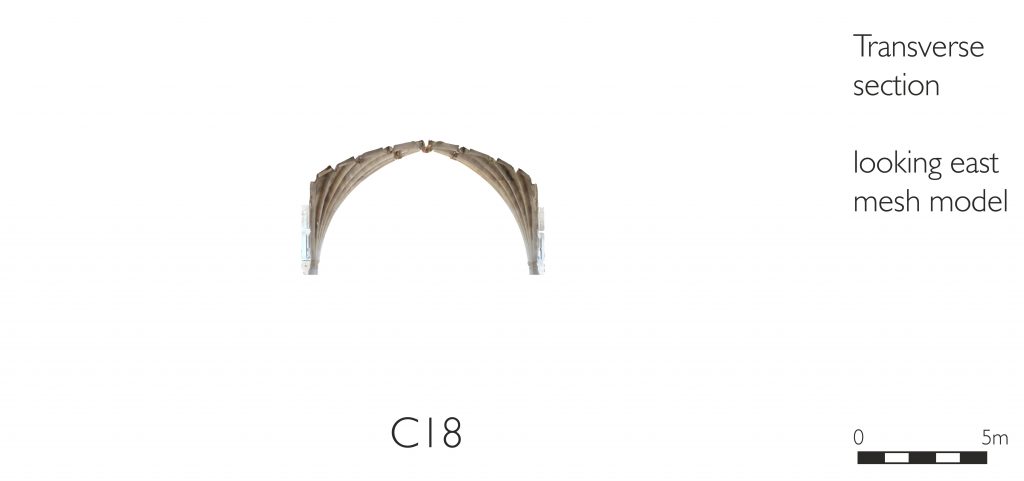
More information
The nave at Norwich Cathedral was vaulted under Bishop Walter Lyhart (1446-72), probably according to the designs of Master Robert Everard. It takes the form of a complex lierne vault further divided by a sequence of stacked tiercerons, similar in layout to the far earlier vaults at Exeter. Their general form was repeated in both the choir and transept, though it is possible that there was some variation in their underlying geometry.
Norwich Cathedral Cloister
East Walk
E1-E12 (1297-1330)
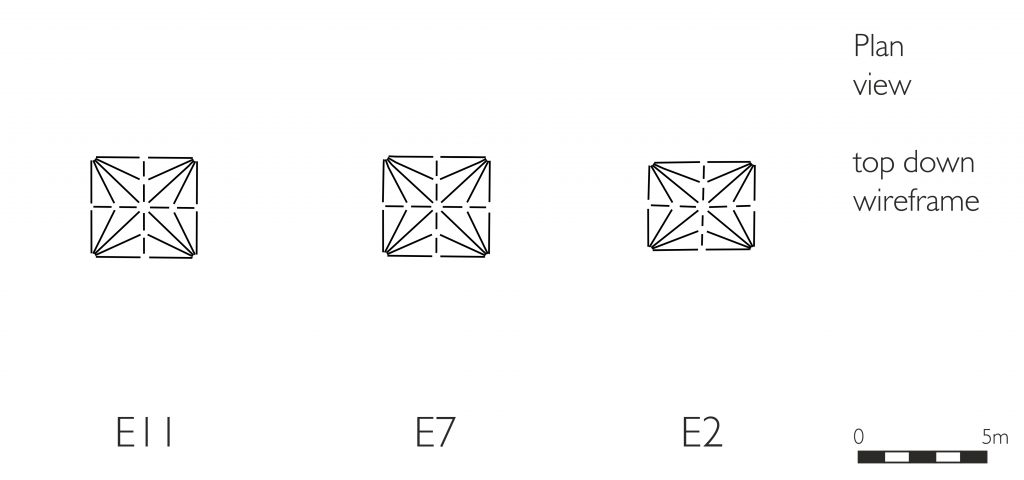
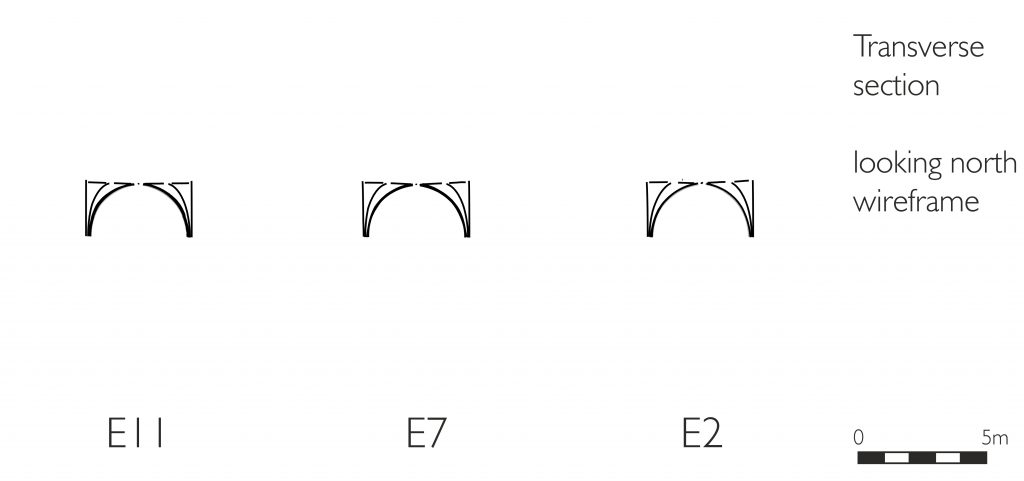
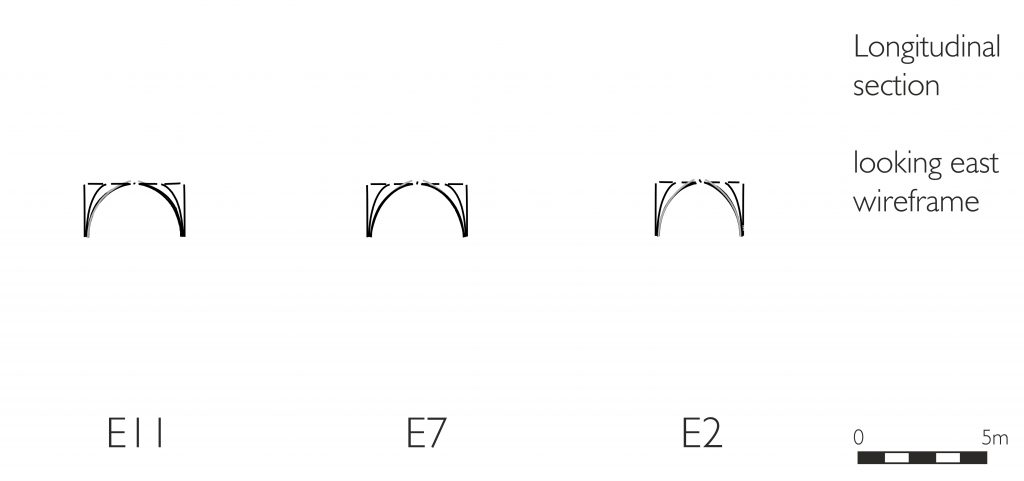
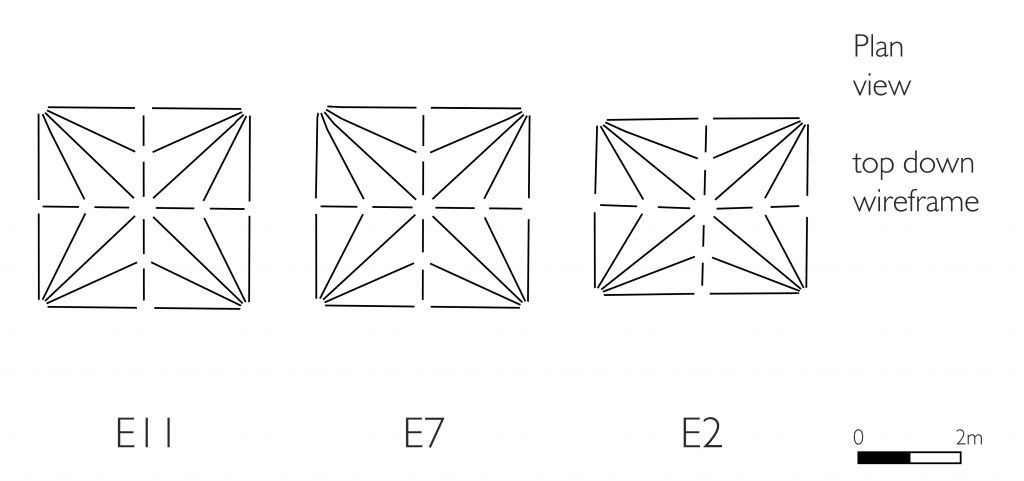
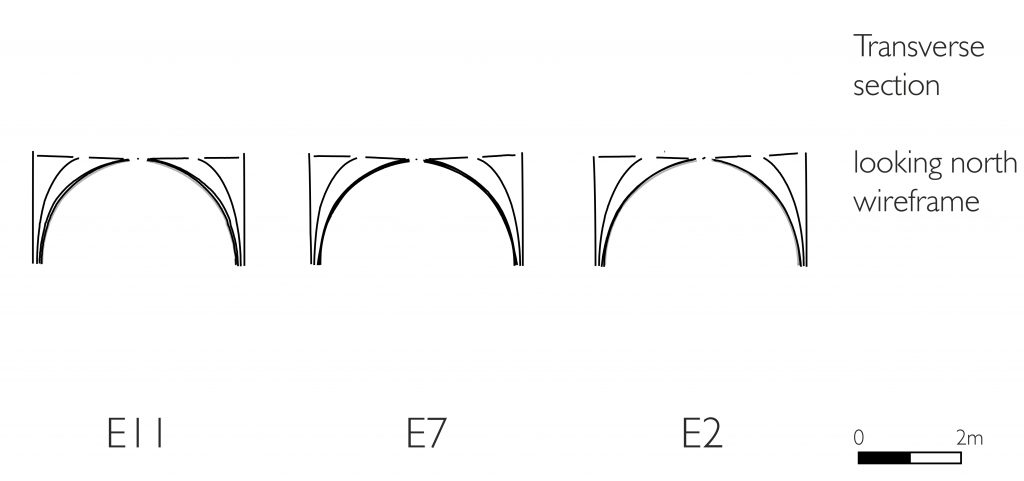
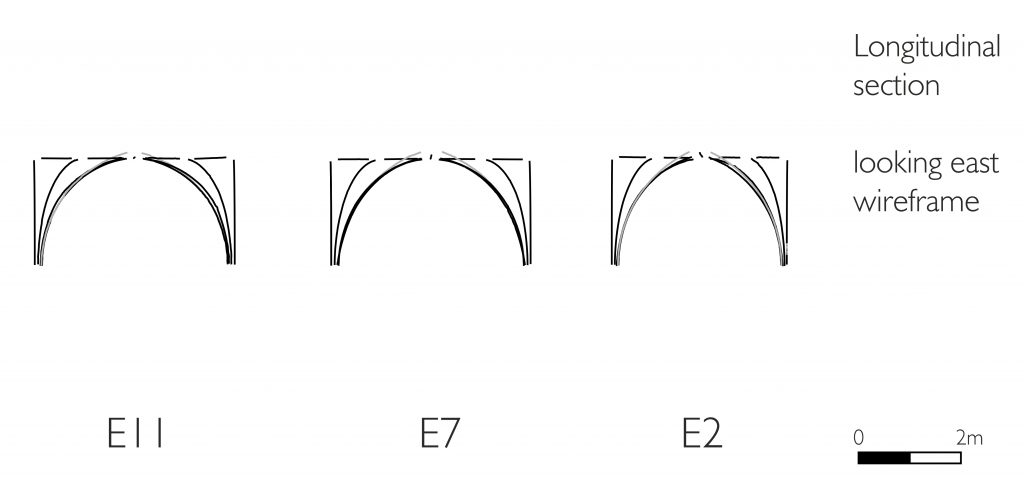
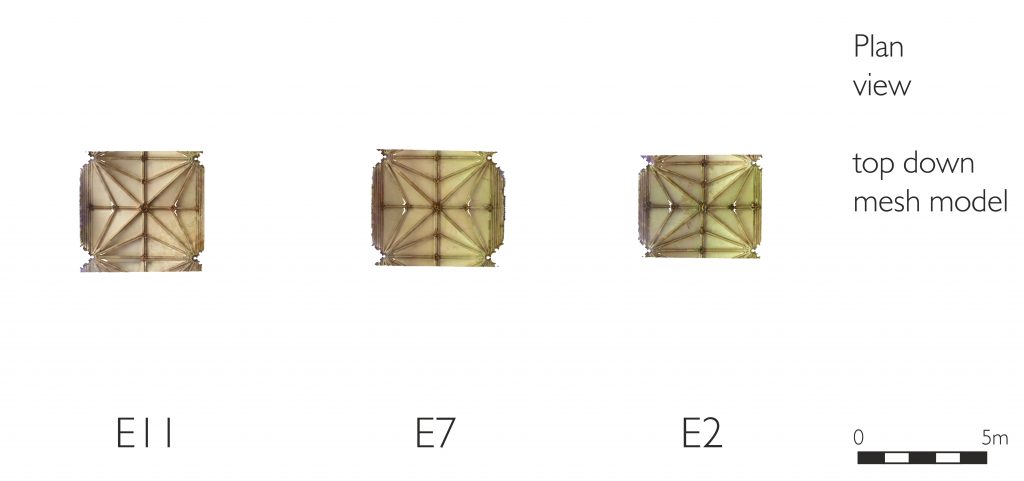
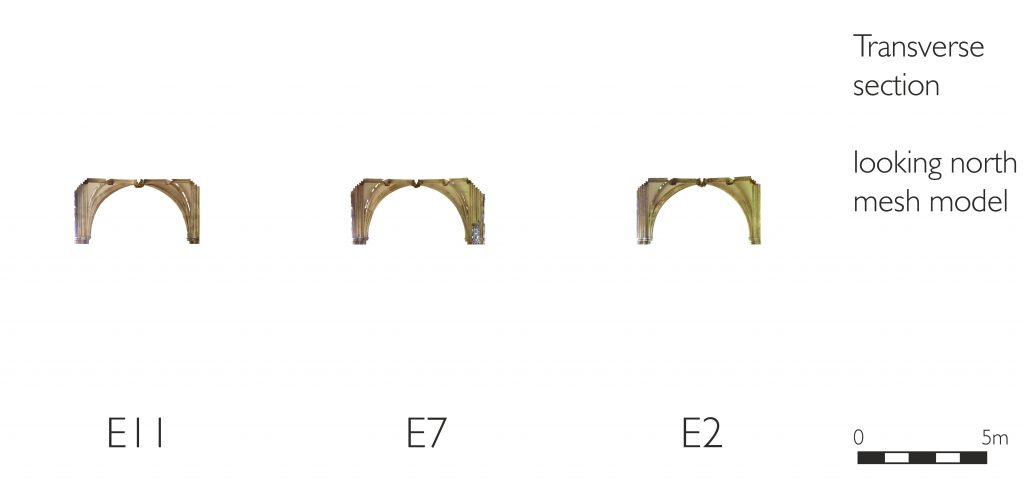
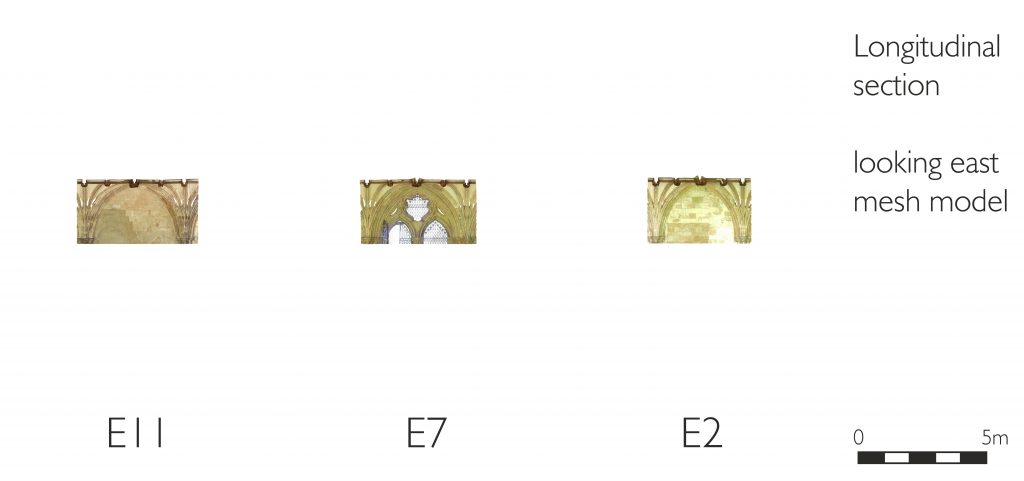
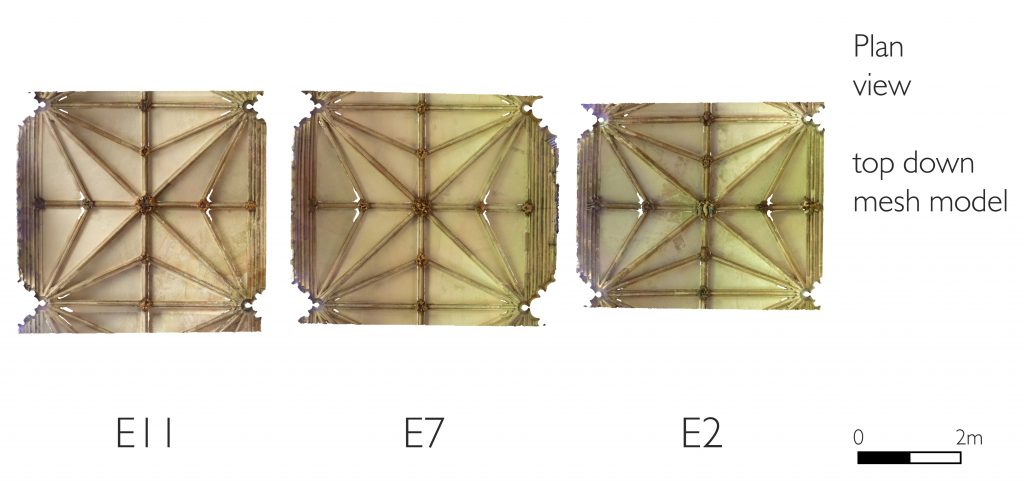
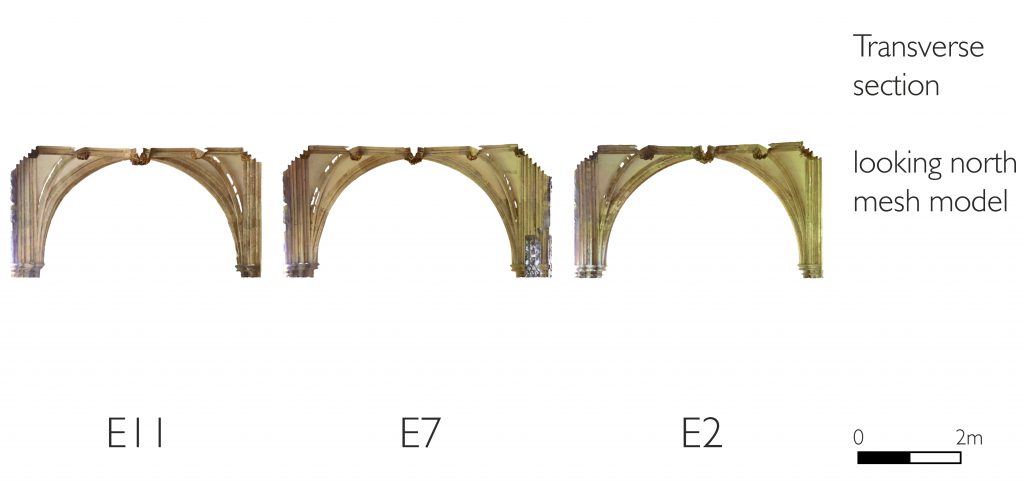
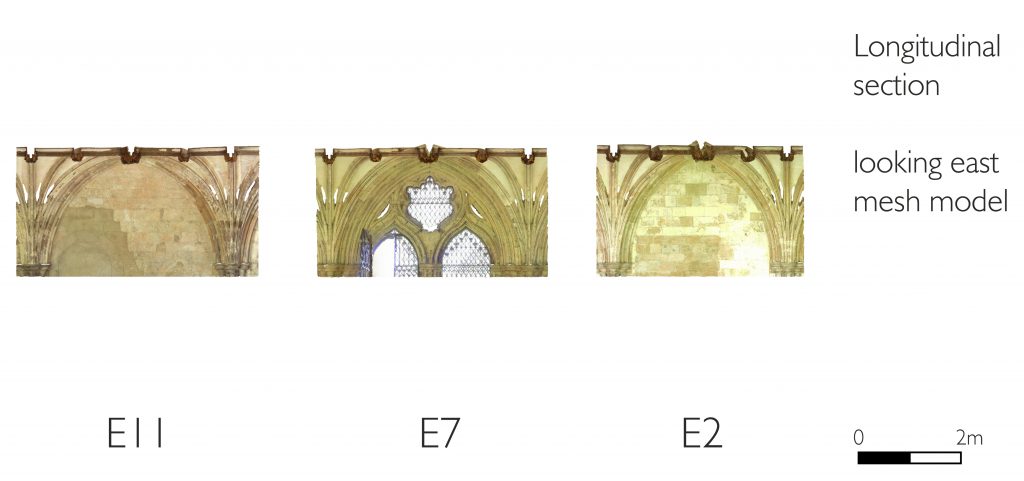
More information
The building of the east walk was a prolonged and frequently disrupted process, the chronology of which is highly contested by scholars. For the vaults, the sequence of construction almost certainly began with the three bays facing the entrance into the chapter house (E6-E8), followed by the southern four bays (E9-E12) and finally the five northern bays (E1-E5). Each of these sections has a distinct combination of geometrical layouts, moulding profiles and sculptural style, as well as different approaches to subject matter in the bosses.
South Walk
S1-S11 (c. 1325-30; c. 1415-16)
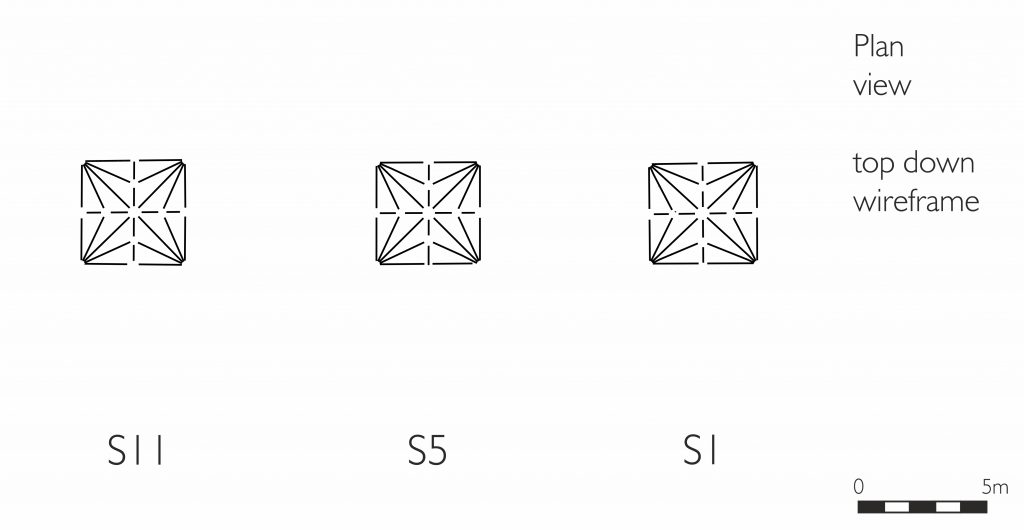
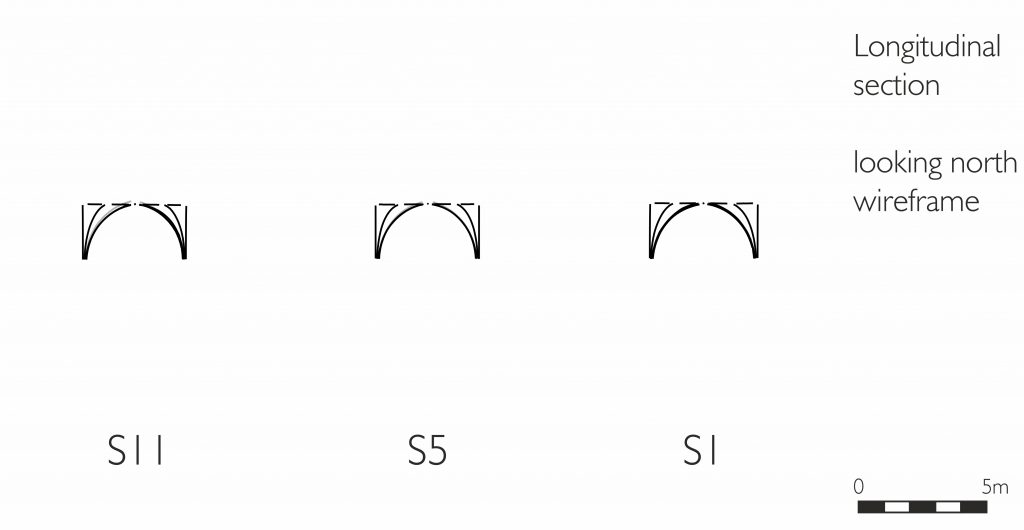
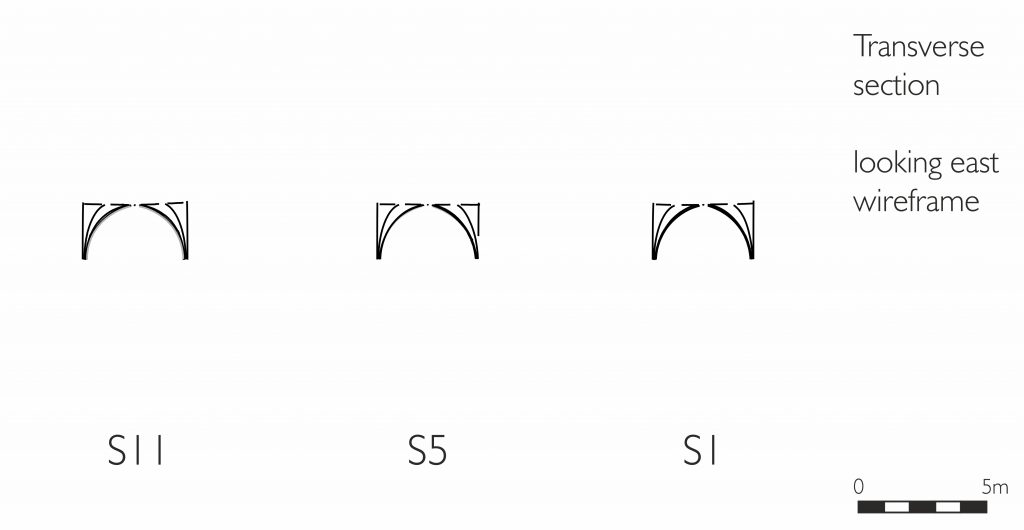
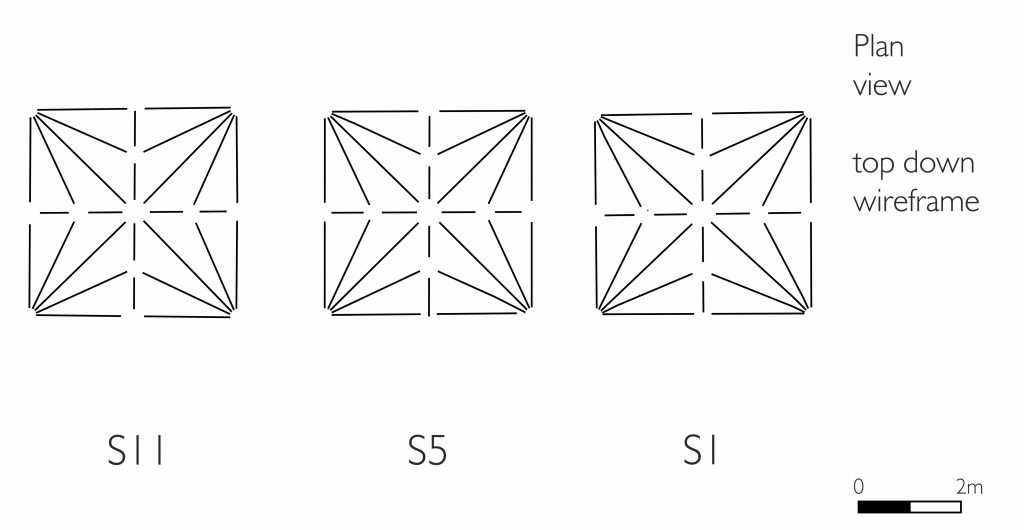
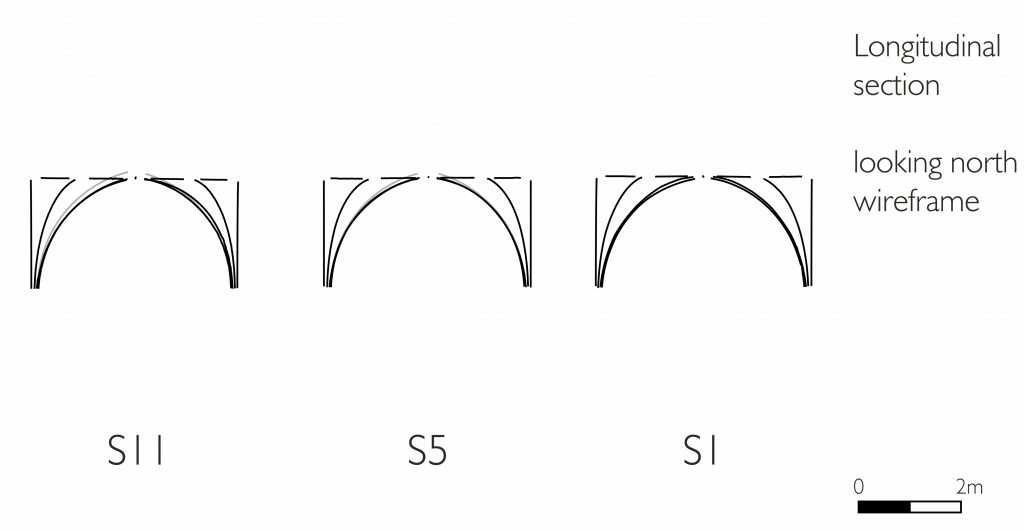
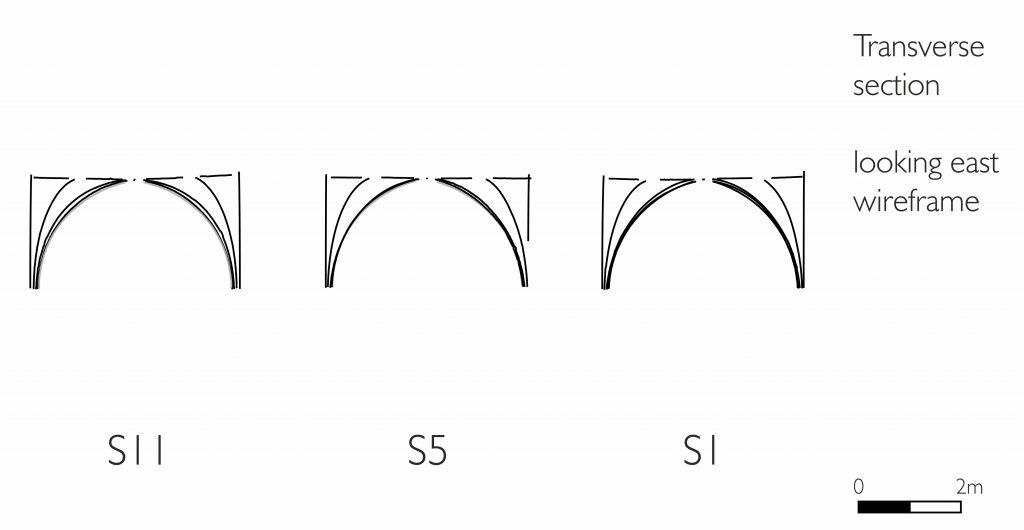
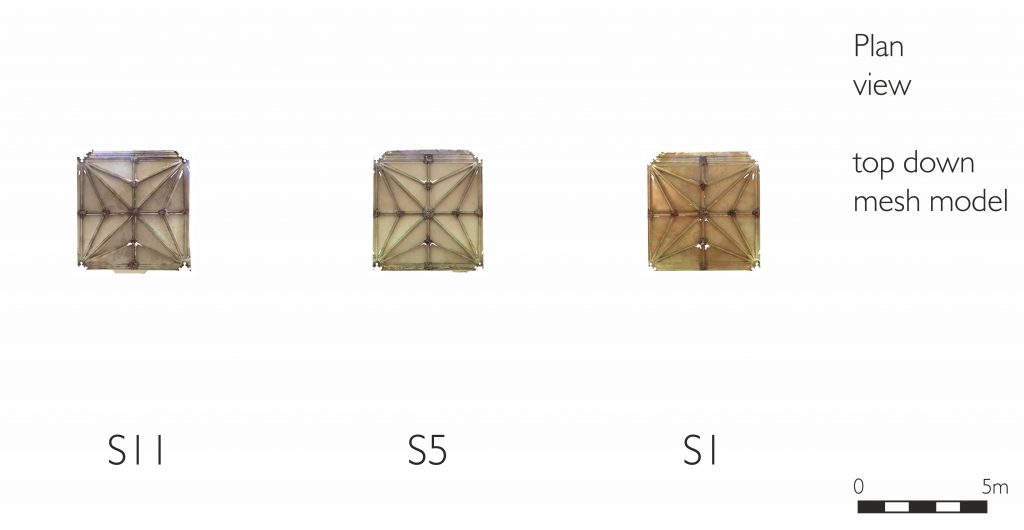
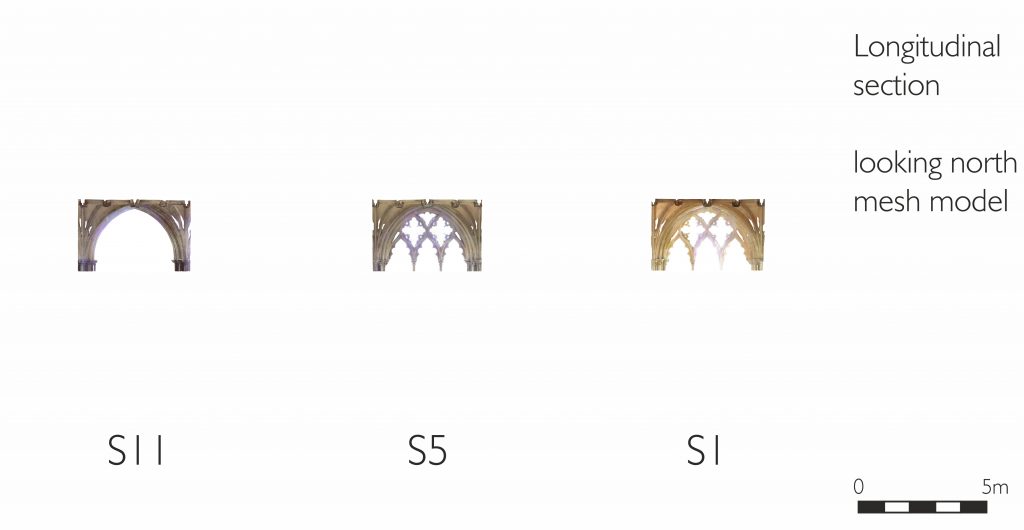
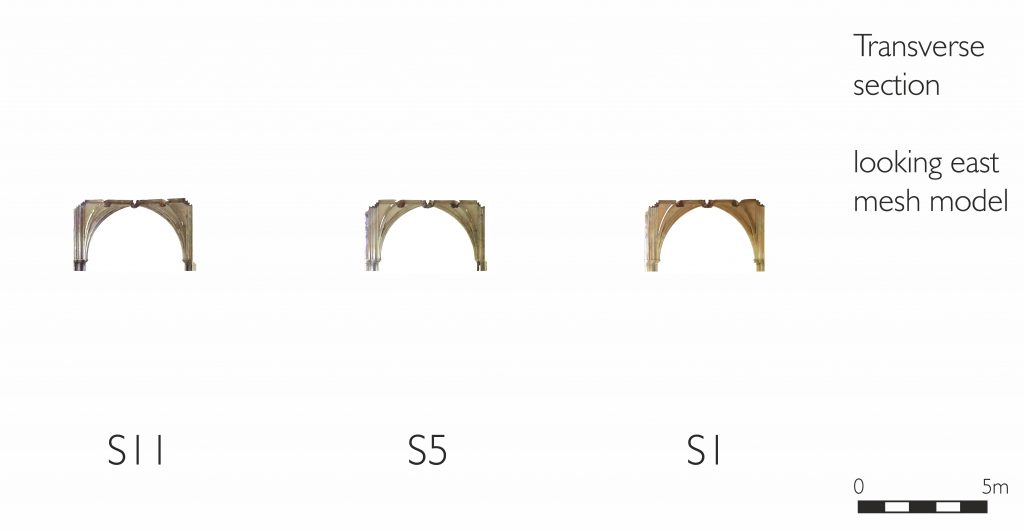
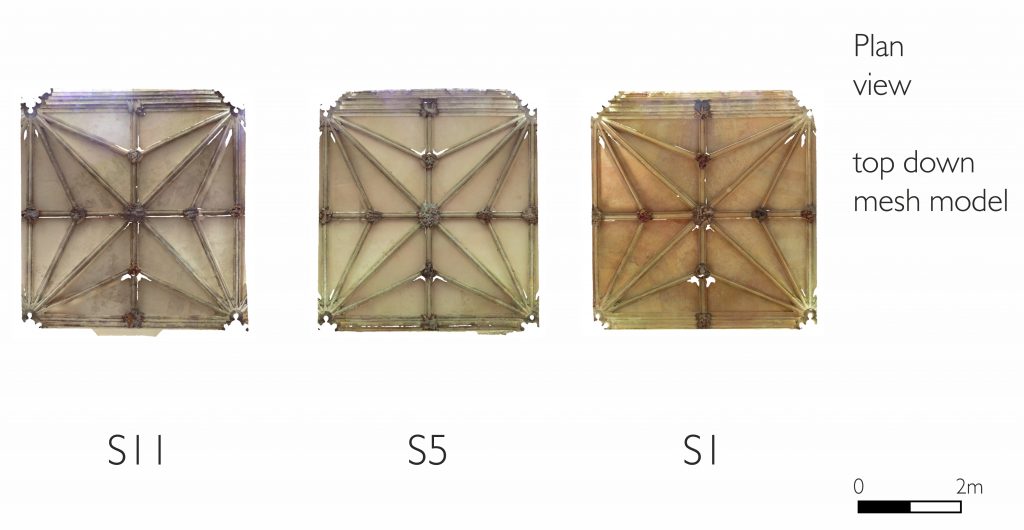
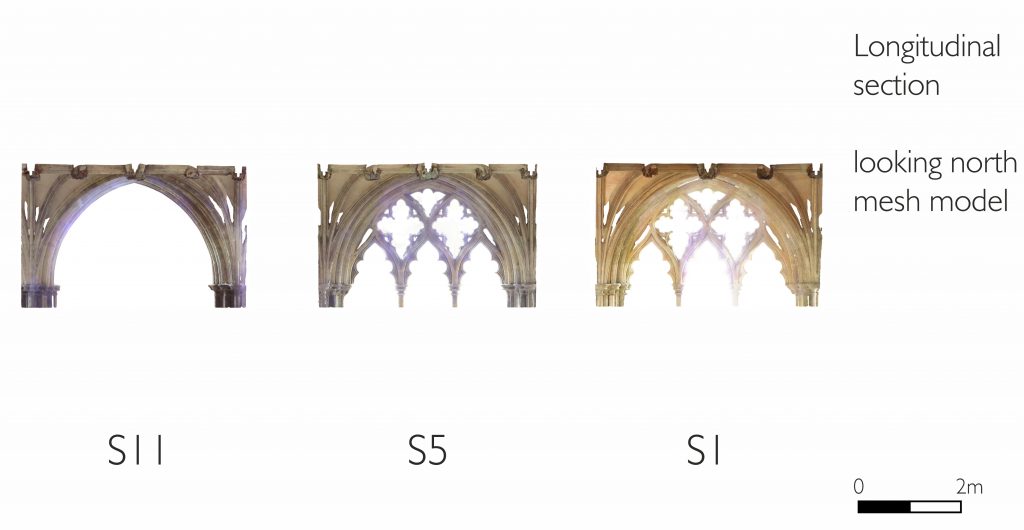
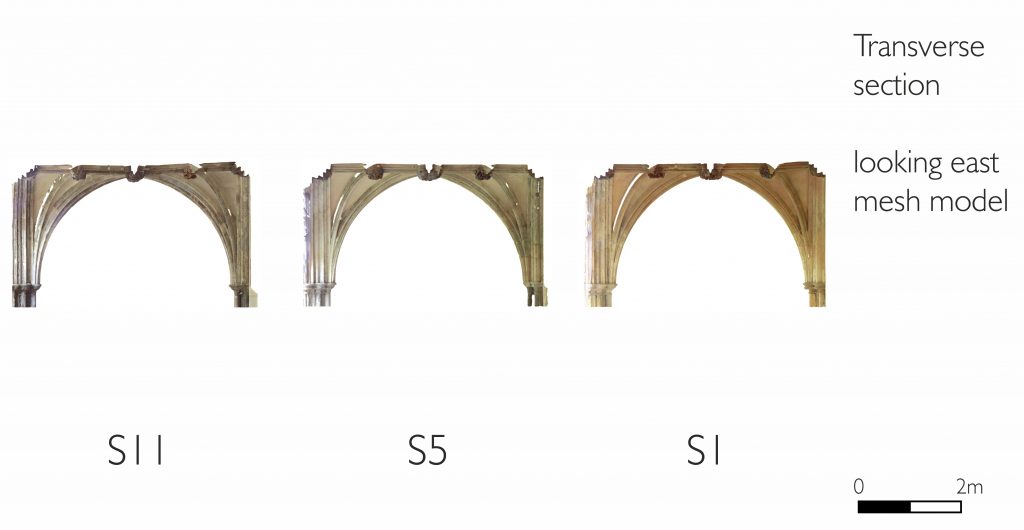
More information
The south walk at Norwich was probably largely vaulted c. 1325-30, though several alternative dates have been proposed. Its mouldings and geometry are close to those of the northern section of the east walk (E1-E5), suggesting some continuity in planning between the two sections. The only exception is bay S1 (c. 1415-16), which instead sets the pattern for the three southernmost bays of the west walk (W9-W11).
West Walk
W1-W11 (1420-22; 1425-30)
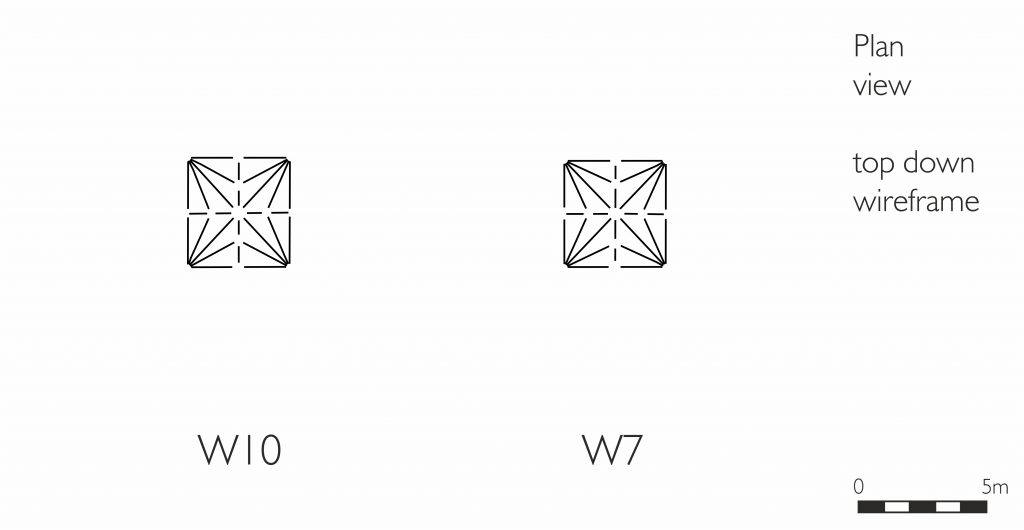
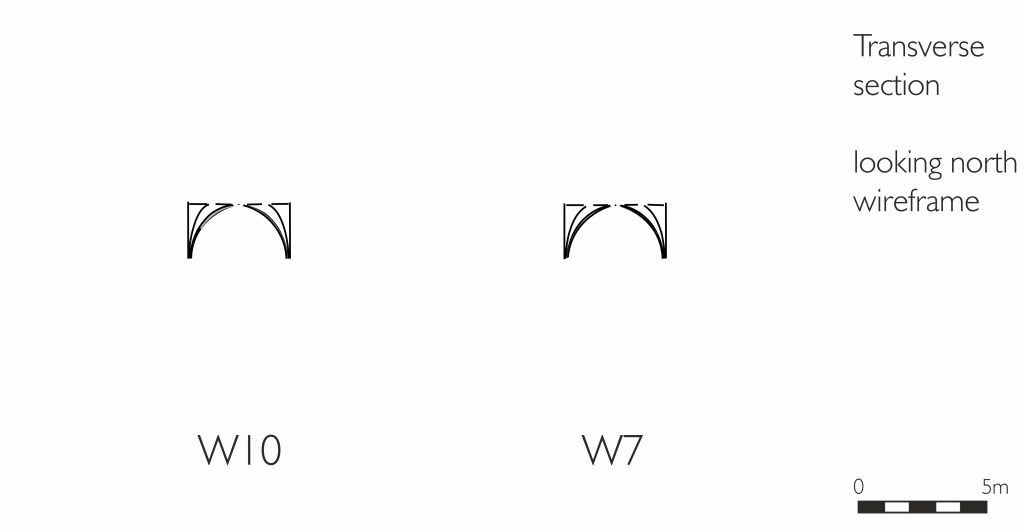
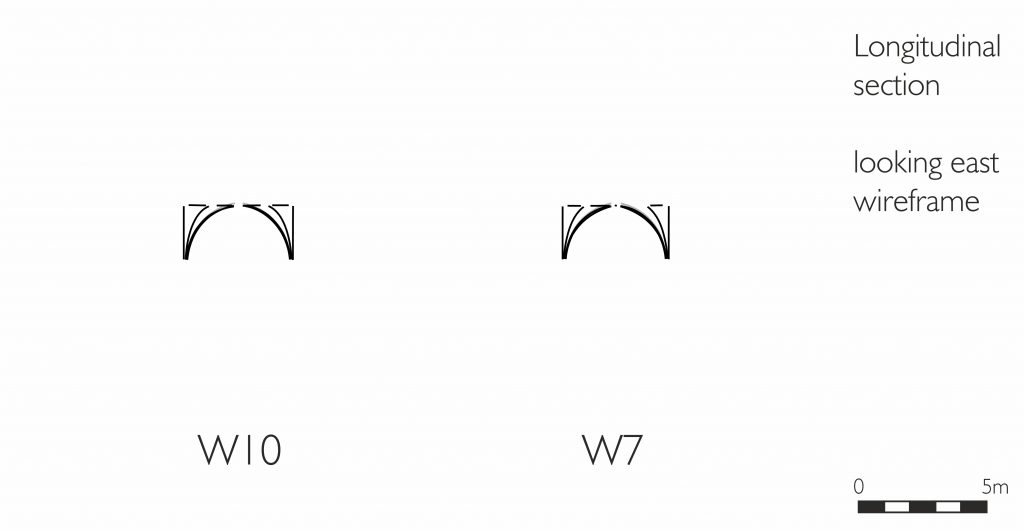
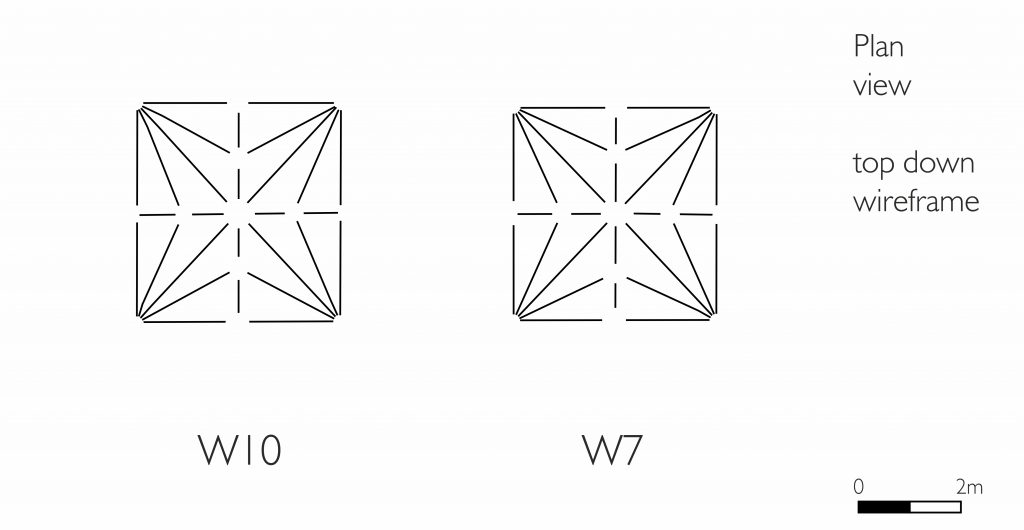
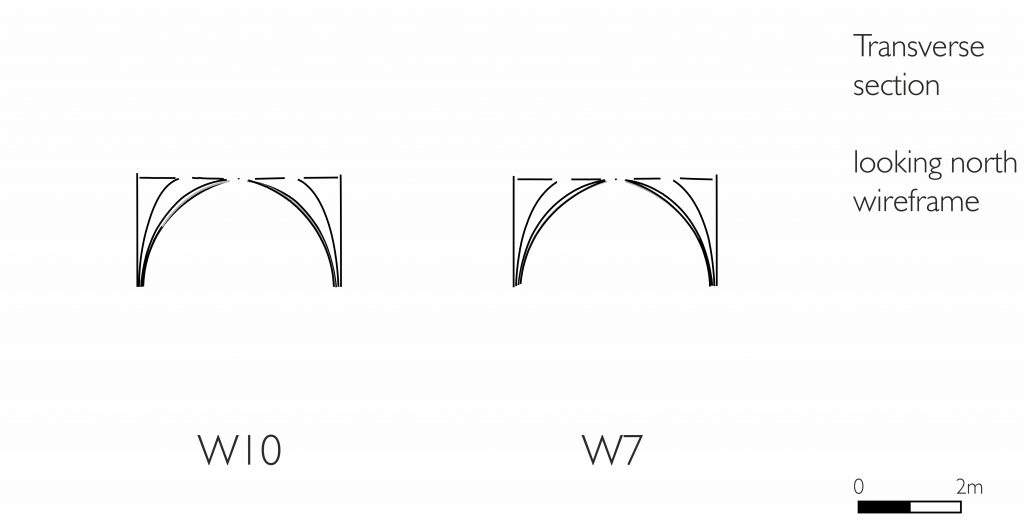
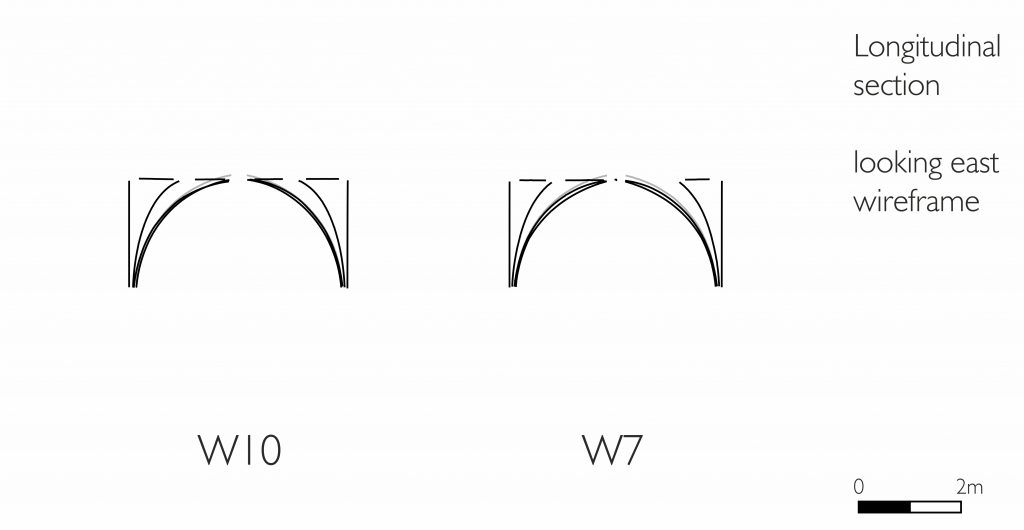
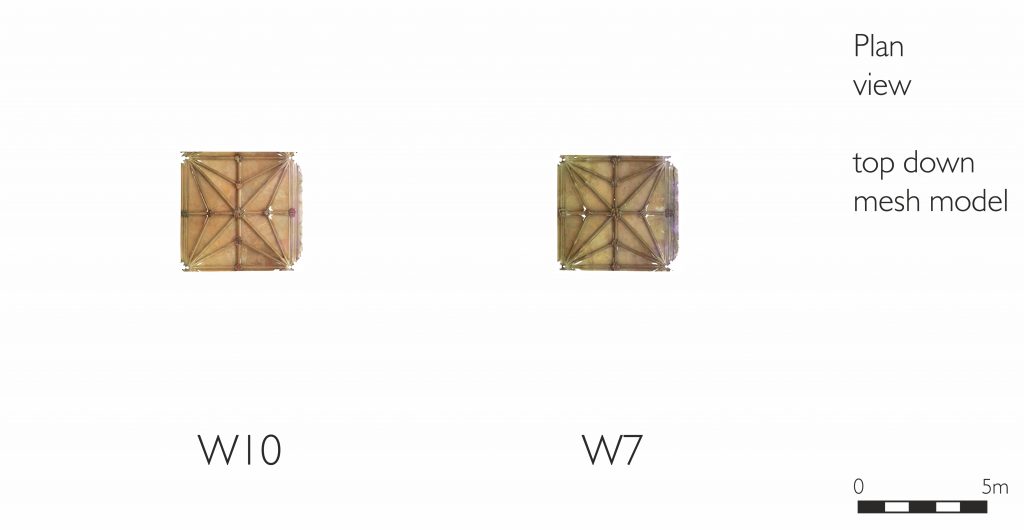
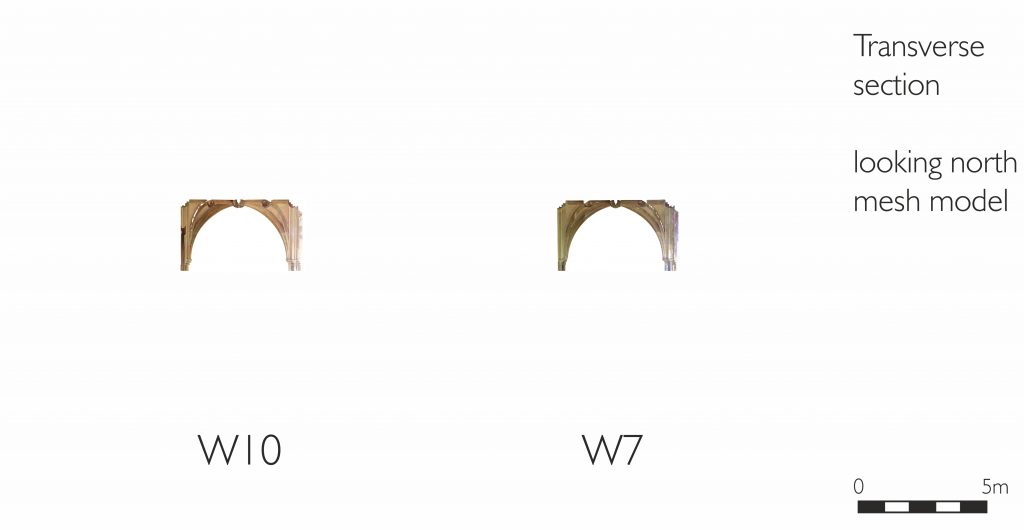
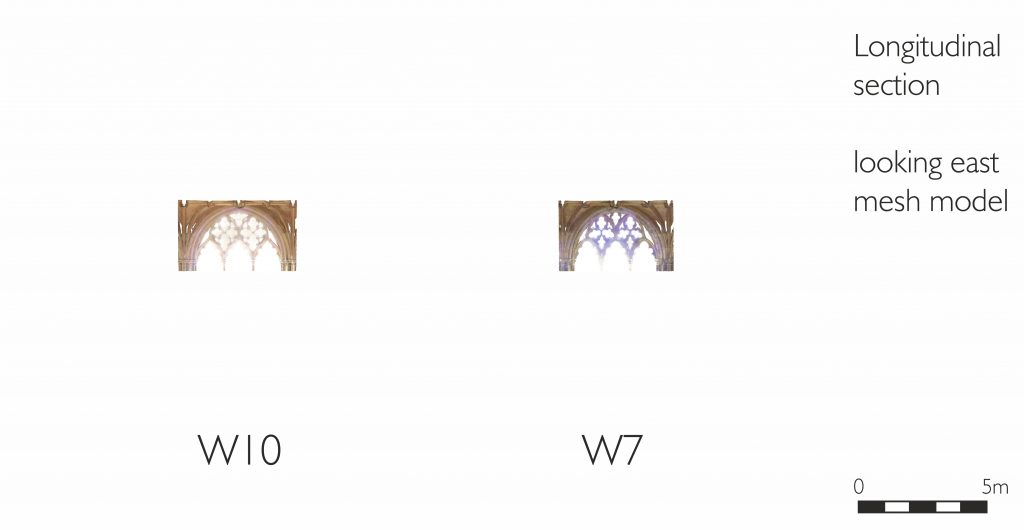


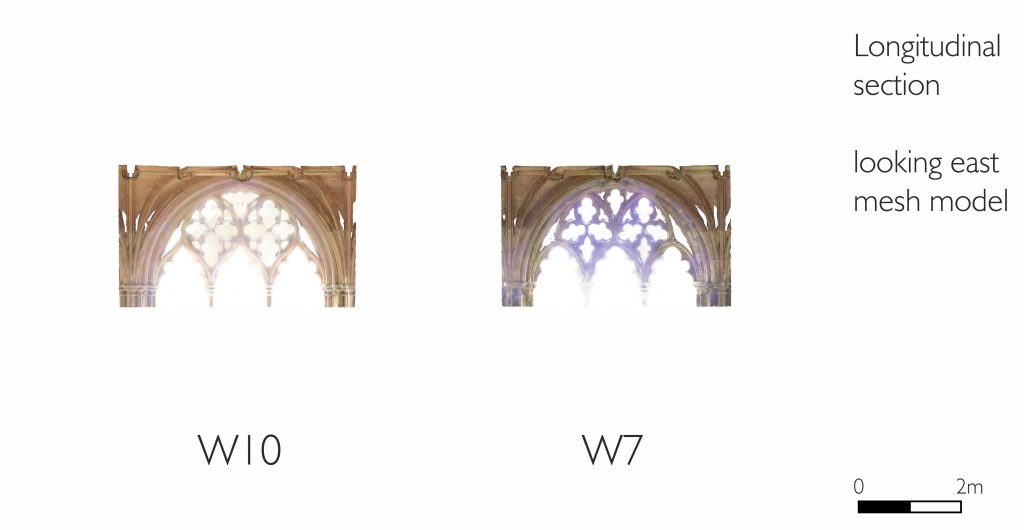
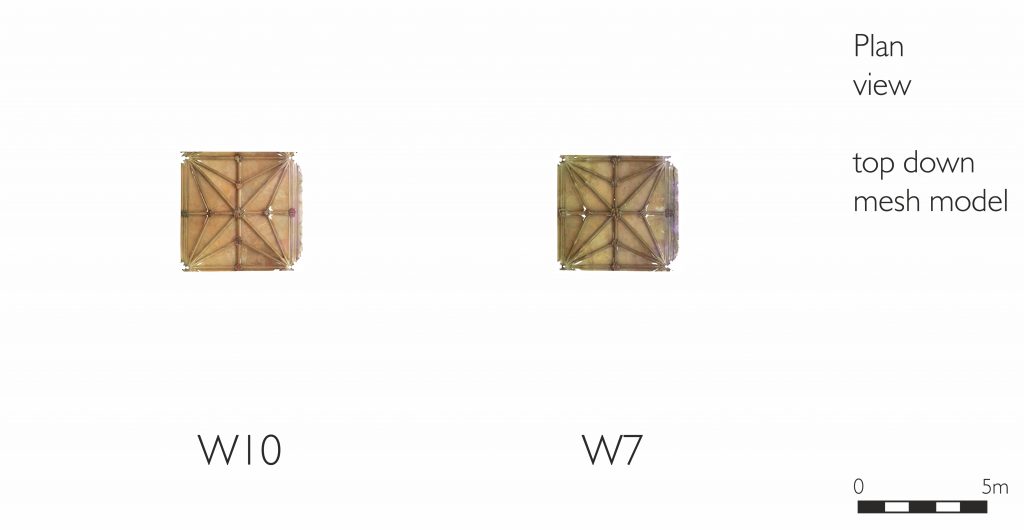
More information
The vaulting in the west walk was constructed in two distinct phases. The first consisted of the southern three bays (W9-11) and has usually been dated c. 1420-22. Whilst these bays were set out using the same methods as had been pioneered in the westernmost bay of the south walk (S1), the remainder adopted the same pattern as those in the north walk. Consequently, bays W1-W8 have conventionally been dated c. 1425-30. However, these date ranges are not absolutely certain and several alternative chronologies have been proposed.
North Walk
N1-N11 (c. 1423-30)
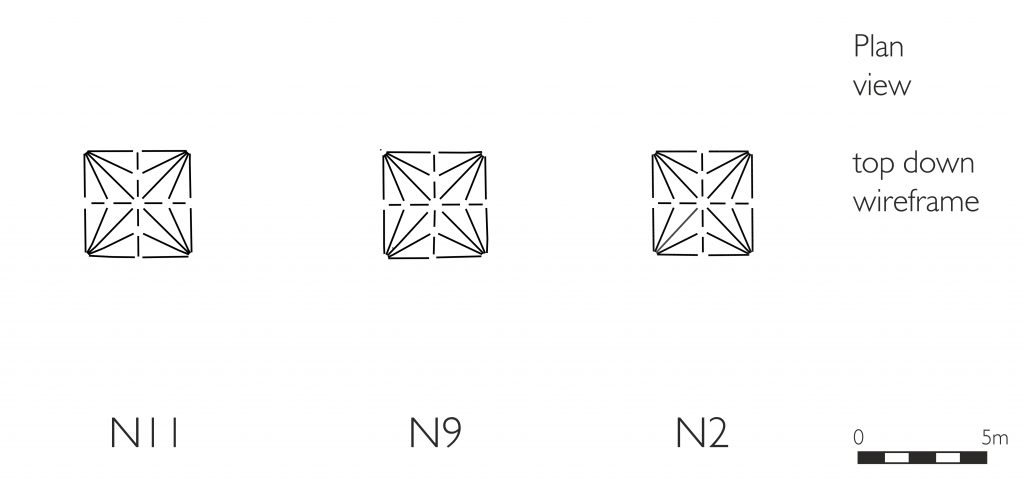
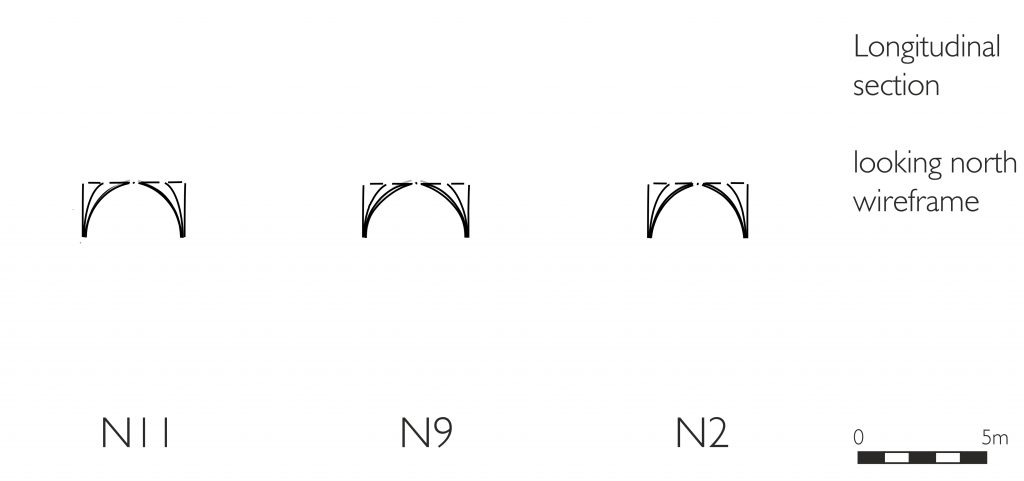
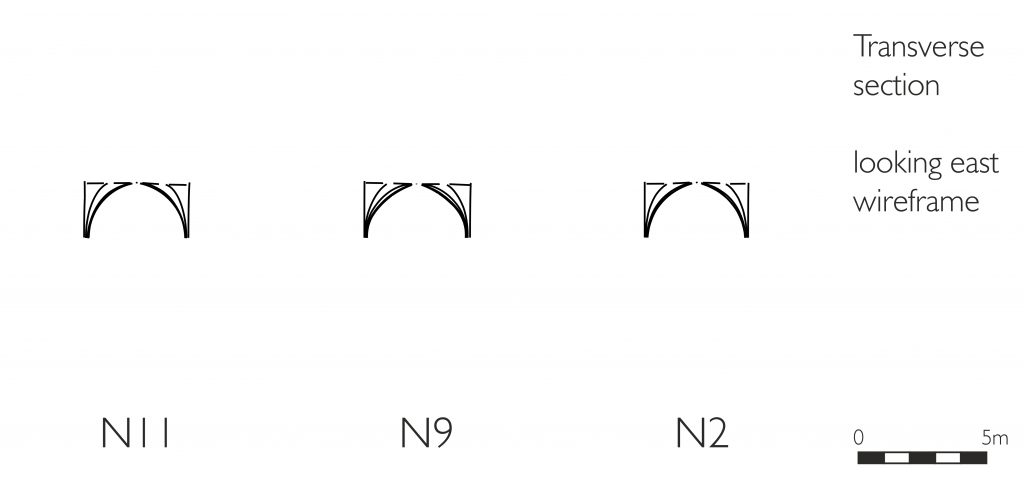

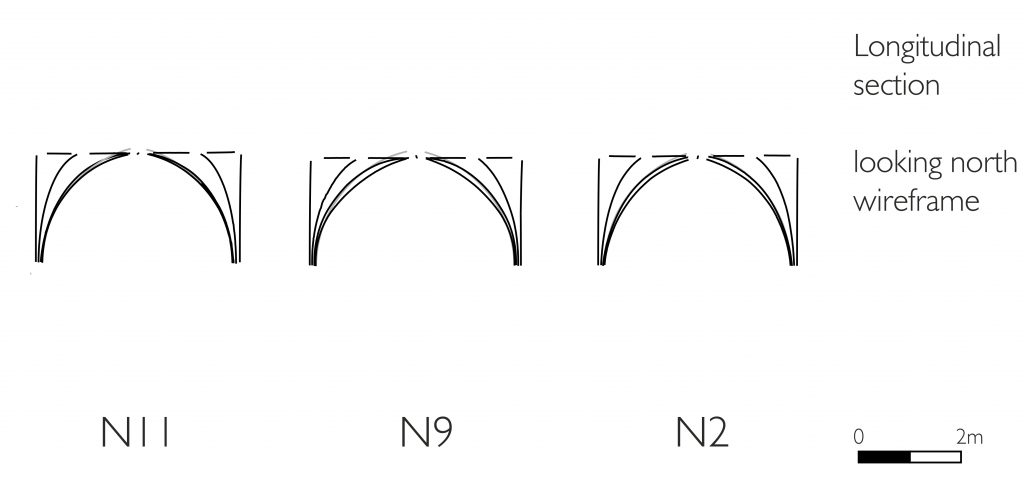
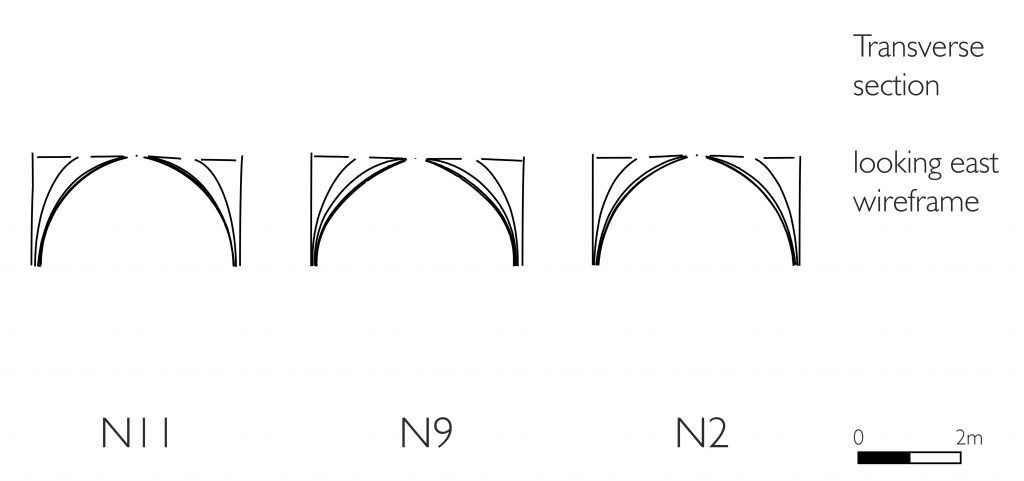
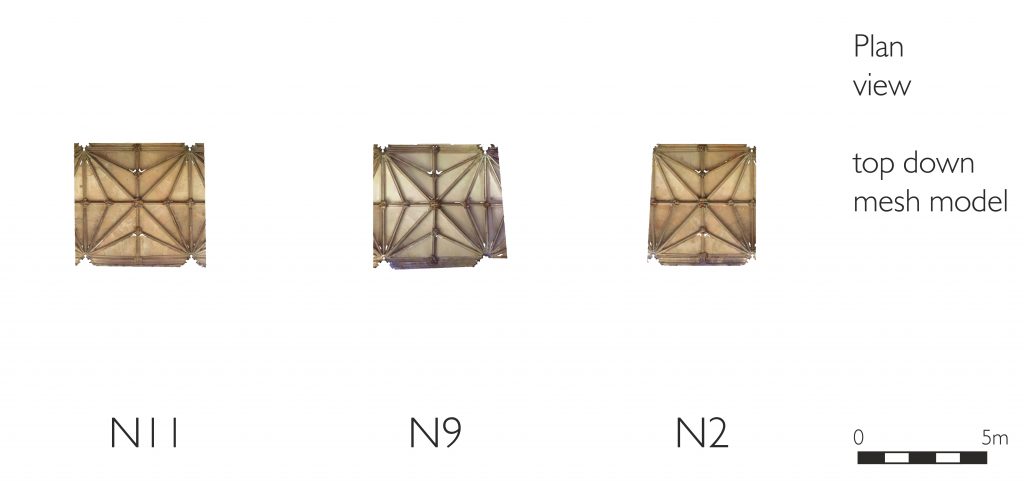
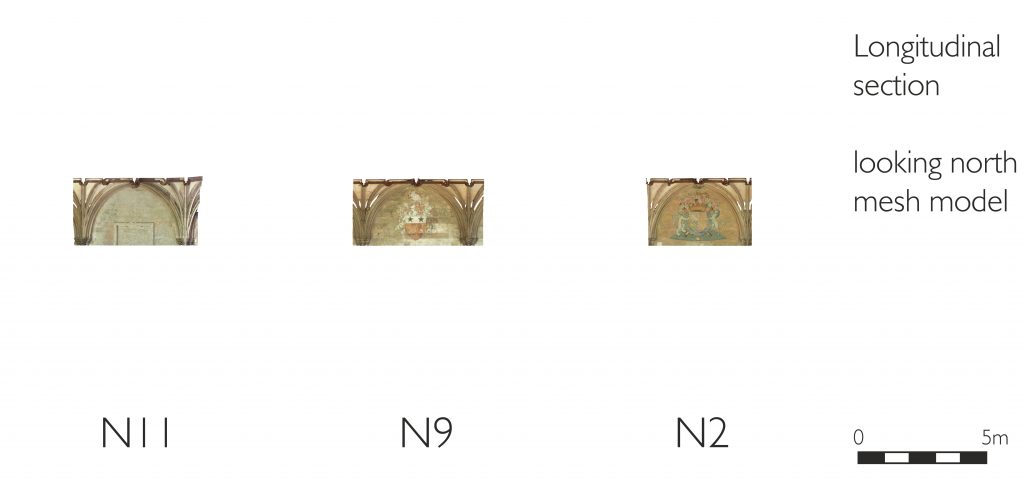
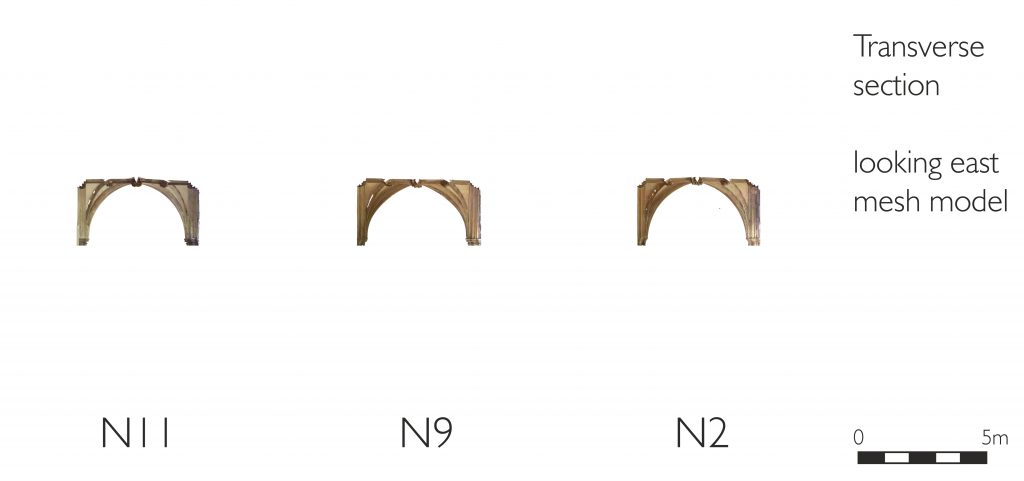
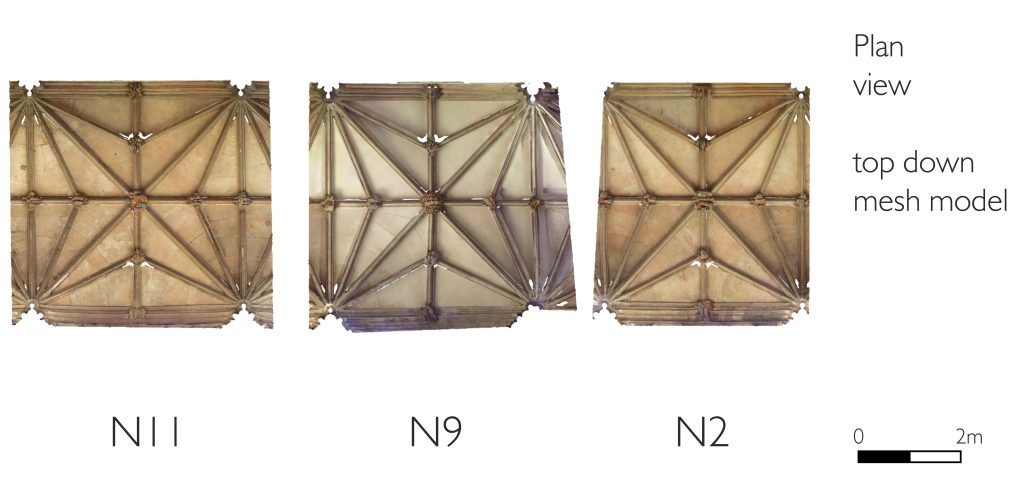
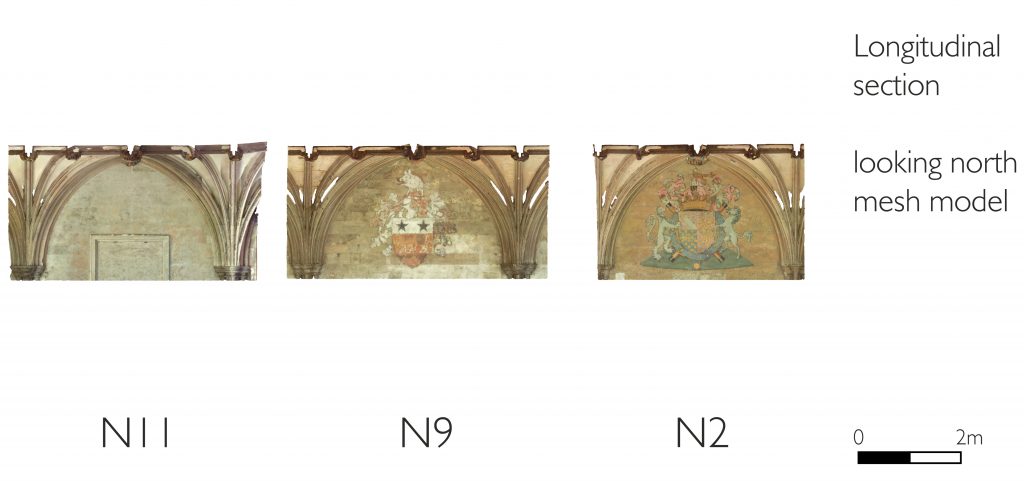
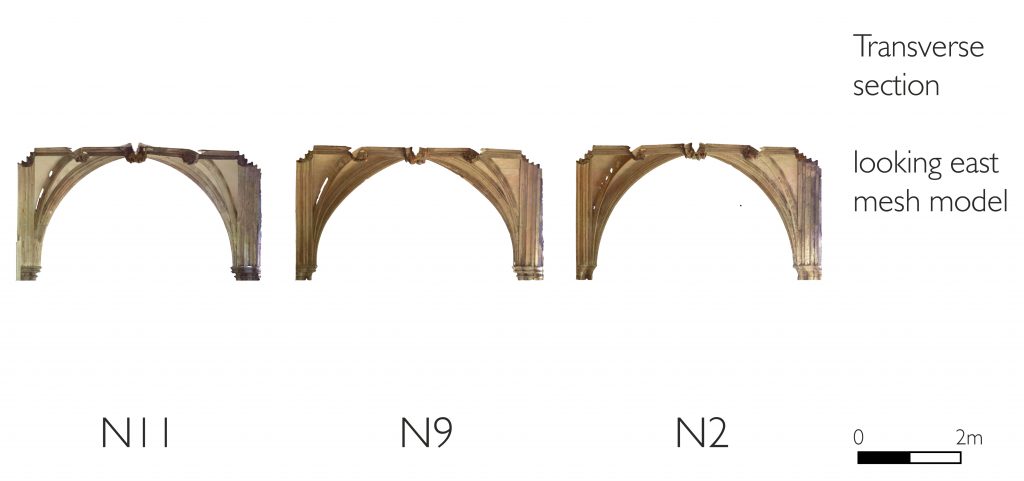
More information
The north walk vault in the cloister at Norwich has been variously dated between c. 1423 and 1430. Its design is similar to the northern section of the west walk (W1-W8), though several scholars have argued that the vaulting in the north walk predates that of the west. The only exception is bay N11, where the underlying walls and tas-de-charge stones appear to have been erected at the same time as those of the northern section of the east walk (E1-E5). Its design therefore had to be laid out in accordance with the pre-existing fabric, giving it a distinct geometry from the rest of the walk.
Corner Bays
NE; SE; SW; NW
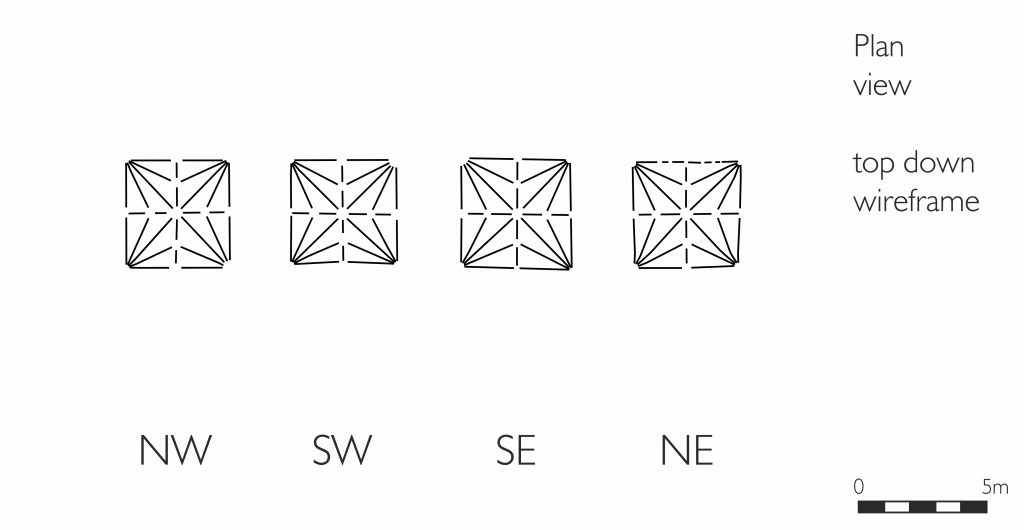
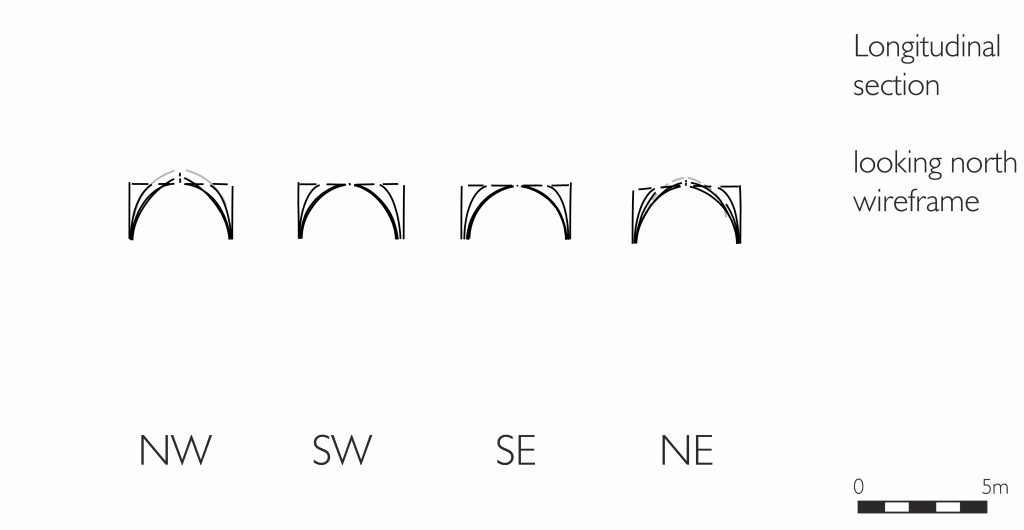
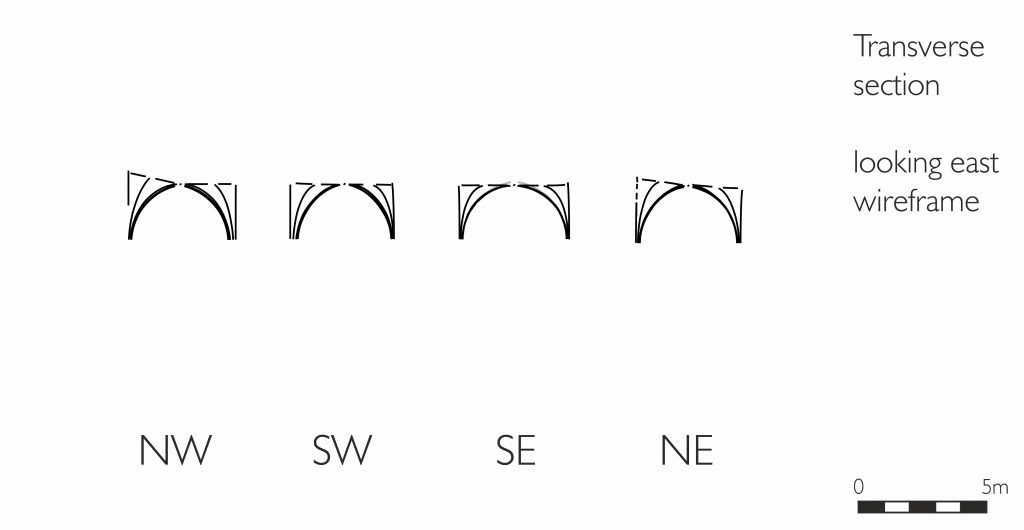
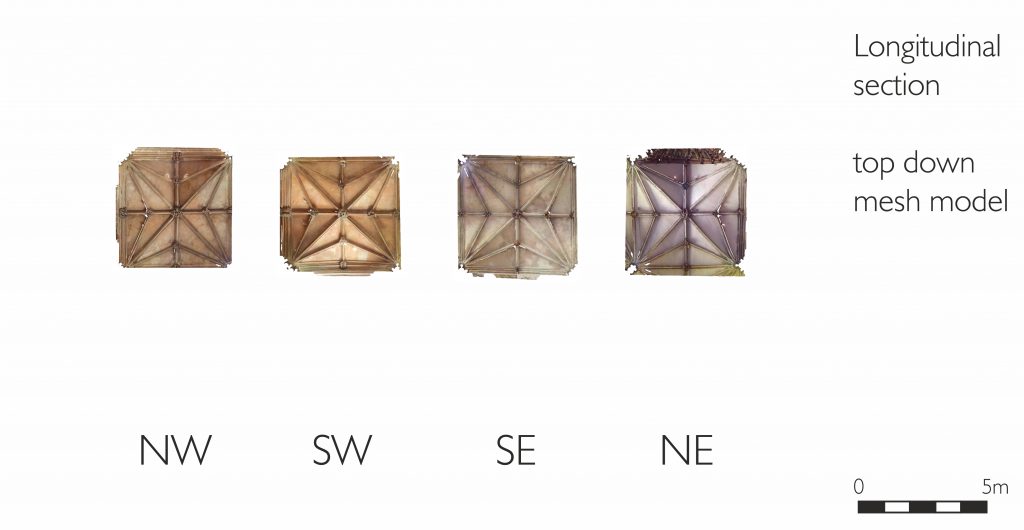
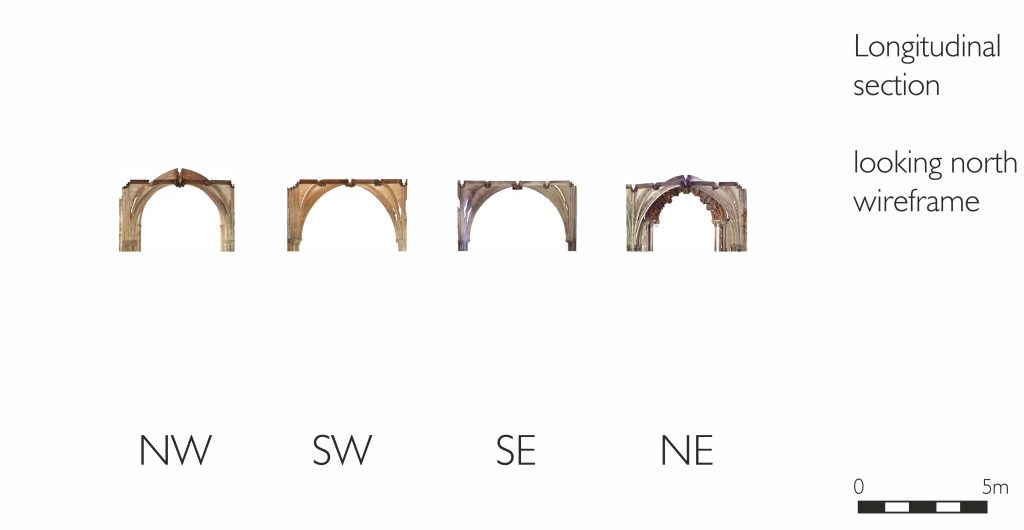
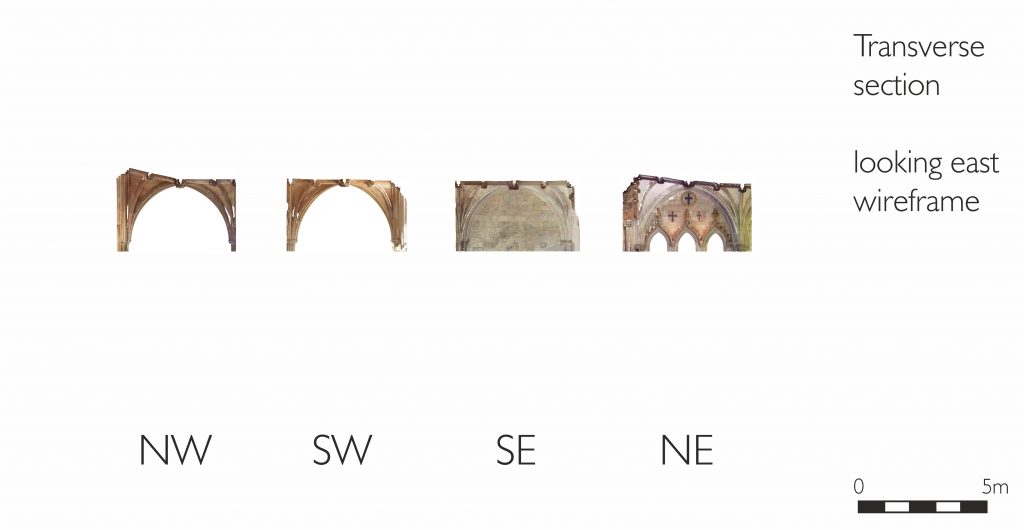
More information
The corners of the cloister at Norwich were built several different times according to multiple different designs. In each case the vault had to accommodate a wide range of factors, including the presence of doorways, multiple apex heights, changes in bay plan and later insertions into the underlying walls. Consequently, each corner vault is a unique design tailored to a specific space.
